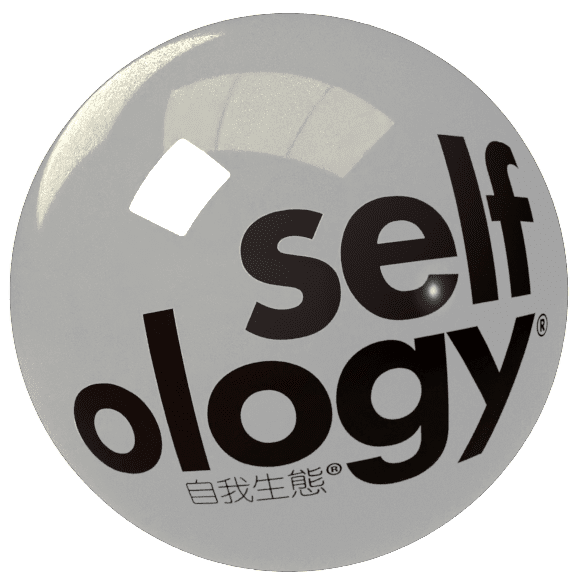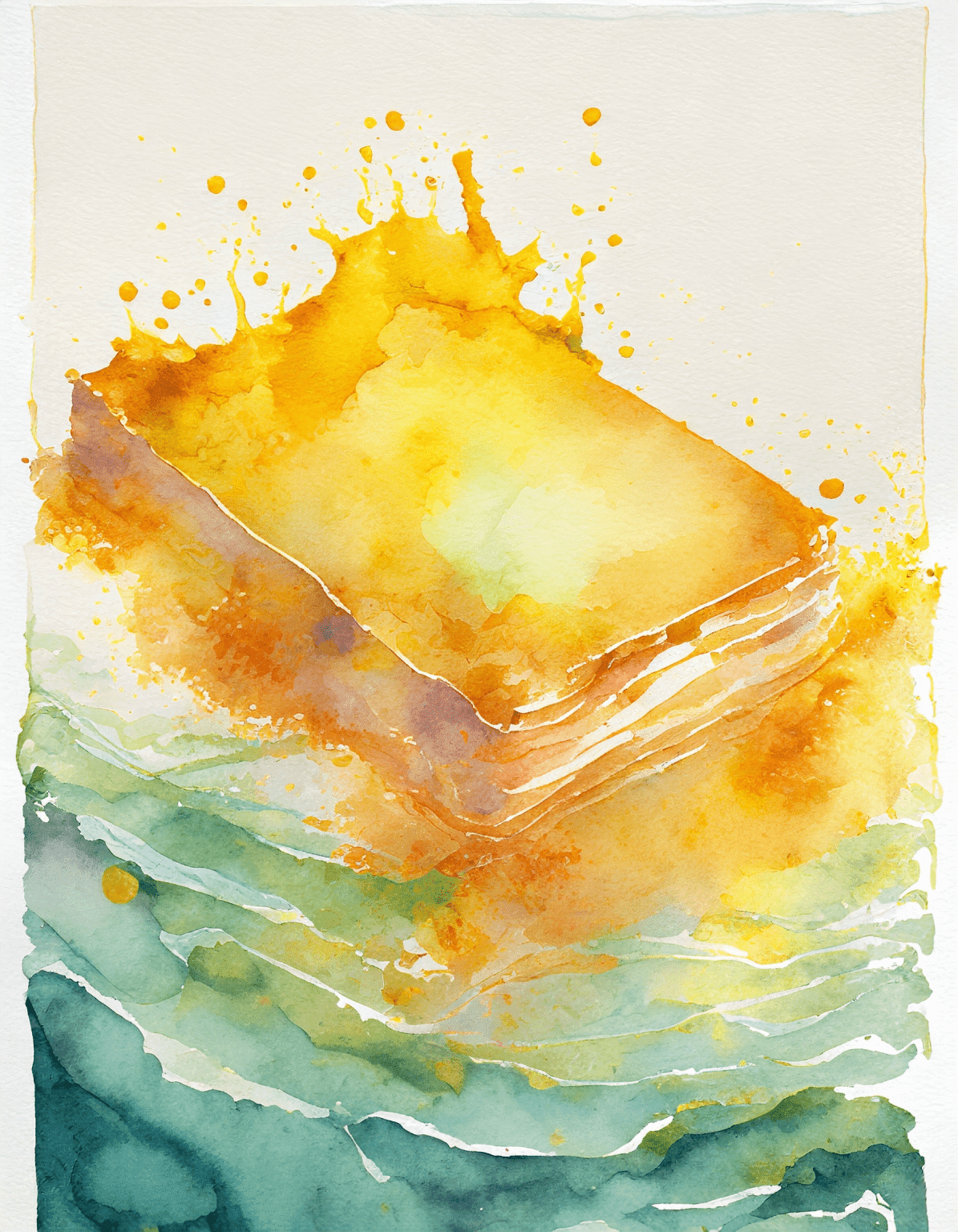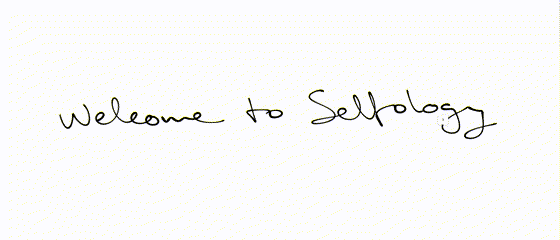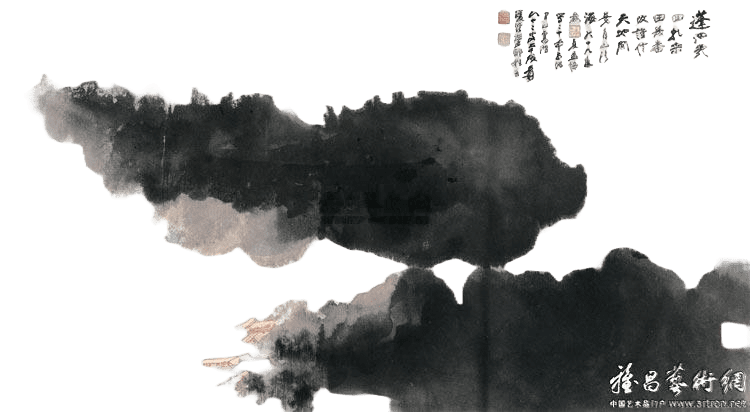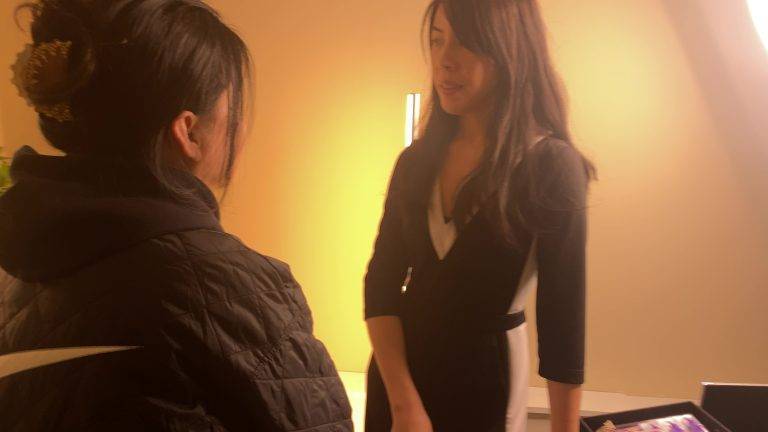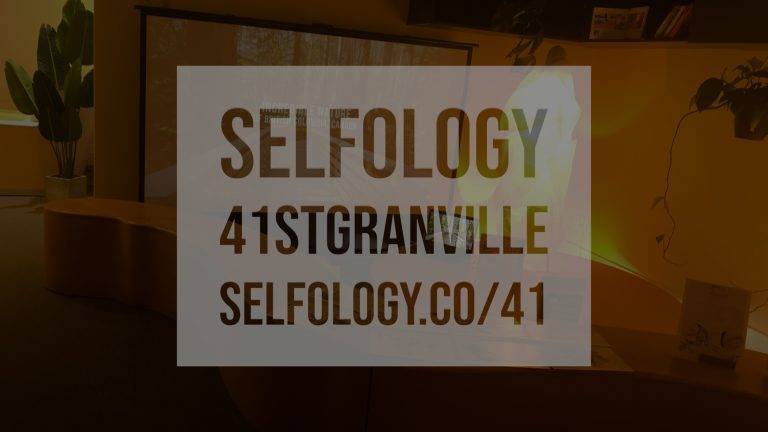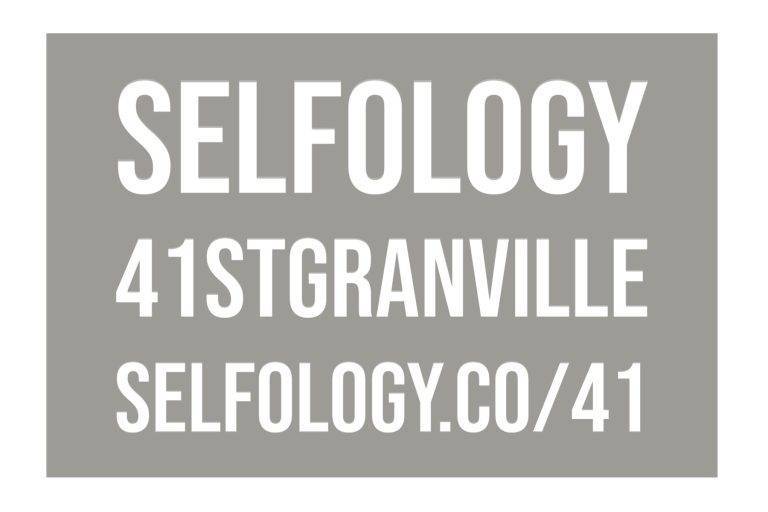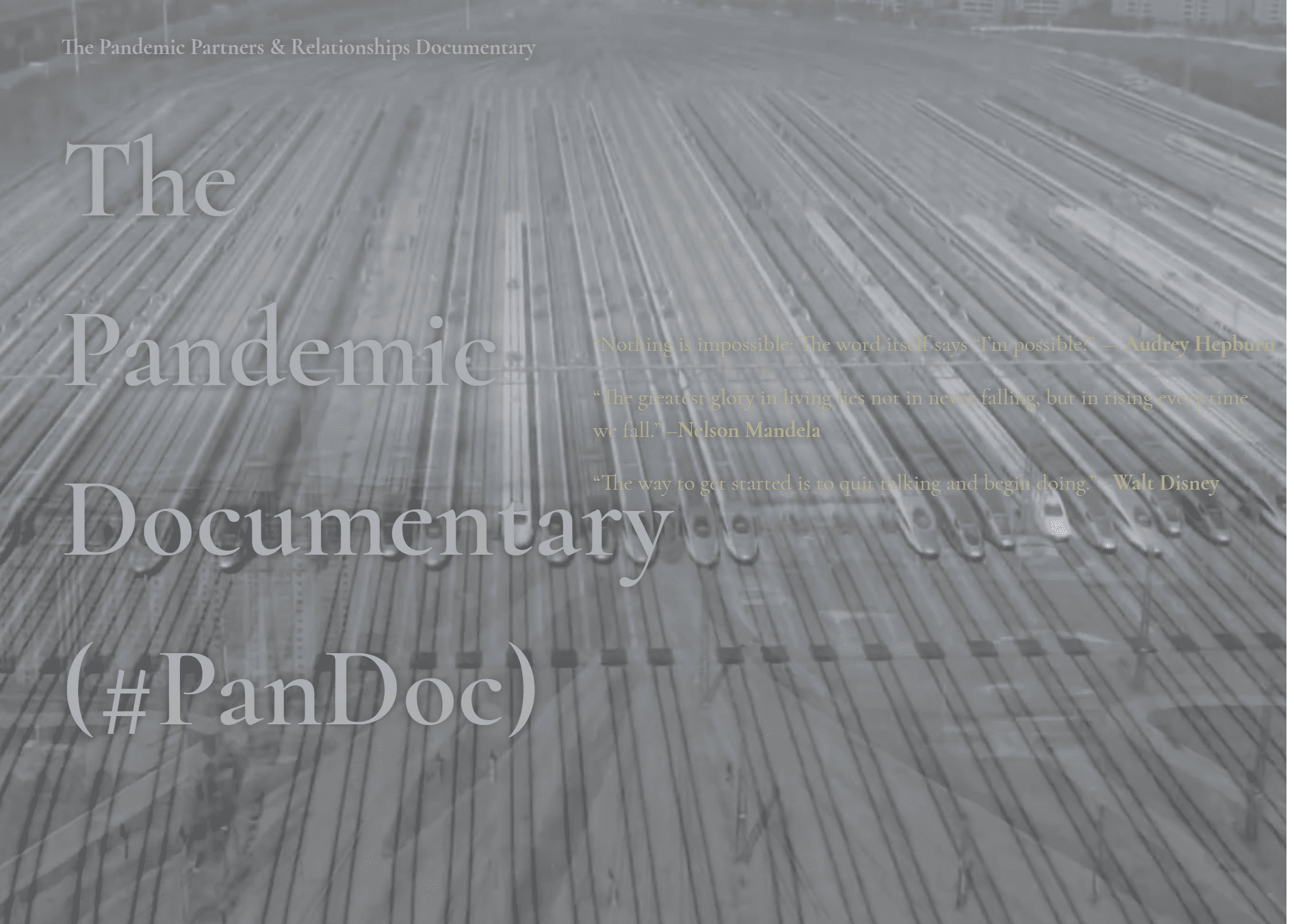1968.00.00 [Φ] carl-jung-forward-to-richard-wilhelms-i-ching
Carl Jung: Forward to Richard Wilhelm’s translation of the I Ching
From the Forward: +
This assumption involves a certain curious principle that I have termed synchronicity, a concept that formulates a point of view diametrically opposed to that of causality. Since the latter is a merely statistical truth and not absolute, it is a sort of working hypothesis of how events evolve one out of another, whereas synchronicity takes the coincidence of events in space and time as meaning something more than mere chance, namely, a peculiar interdependence of objective events among themselves as well as with the subjective (psychic) states of the observer or observers.
Foreword to the I Ching by Carl Gustav Jung HTML Edition by Dan Baruth
Foreword
by Carl Gustav Jung
HTML Edition by Dan Baruth
Since I am not a sinologue, a foreword to the Book of Changes from my hand must be a testimonial of my individual experience with this great and singular book. It also affords me a welcome opportunity to pay tribute again to the memory of my late friend, Richard Wilhelm. He himself was profoundly aware of the cultural significance of his translation of the I Ching, a version unrivaled in the West.
If the meaning of the Book of Changes were easy to grasp, the work would need no foreword. But this is far from being the case, for there is so much that is obscure about it that Western scholars have tended to dispose of it as a collection of “magic spells,” either too abstruse to be intelligible, or of no value whatsoever. Legge’s translation of the I Ching, up to now the only version available in English, has done little to make the work accessible to Western minds.[1]Wilhelm, however, has made every effort to open the way to an understanding of the symbolism of the text. He was in a position to do this because he himself was taught the philosophy and the use of the I Ching by the venerable sage Lao Nai-hsüan; moreover, he had over a period of many years put the peculiar technique of the oracle into practice. His grasp of the living meaning of the text gives his version of the I Ching a depth of perspective that an exclusively academic knowledge of Chinese philosophy could never provide.
I am greatly indebted to Wilhelm for the light he has thrown upon the complicated problem of the I Ching, and for insight as regards its practical application as well. For more than thirty years I have interested myself in this oracle technique, or method of exploring the unconscious, for it has seemed to me of uncommon significance. I was already fairly familiar with the I Ching when I first met Wilhelm in the early nineteen twenties; he confirmed for me then what I already knew, and taught me many things more.
I do not know Chinese and have never been in China. I can assure my reader that it is not altogether easy to find the right access to this monument of Chinese thought, which departs so completely from our ways of thinking. In order to understand what such a book is all about, it is imperative to cast off certain prejudices of the Western mind. it is a curious fact that such a gifted and intelligent people as the Chinese has never developed what we call science. Our science, however, is based upon the principle of causality, and causality is considered to be an axiomatic truth. But a great change in our standpoint is setting in. What Kant’s Critique of Pure Reason failed to do, is being accomplished by modern physics. The axioms of causality are being shaken to their foundations: we know now that what we term natural laws are merely statistical truths and thus must necessarily allow for exceptions. We have not sufficiently taken into account as yet that we need the laboratory with its incisive restrictions in order to demonstrate the invariable validity of natural law. If we leave things to nature, we see a very different picture: every process is partially or totally interfered with by chance, so much so that under natural circumstances a course of events absolutely conforming to specific laws is almost an exception.
The Chinese mind, as I see it at work in the I Ching, seems to be exclusively preoccupied with the chance aspect of events. What we call coincidence seems to be the chief concern of this peculiar mind, and what we worship as causality passes almost unnoticed. We must admit that there is something to be said for the immense importance of chance. An incalculable amount of human effort is directed to combating and restricting the nuisance or danger represented by chance. Theoretical considerations of cause and effect often look pale and dusty in comparison to the practical results of chance. It is all very well to say that the crystal of quartz is a hexagonal prism. The statement is quite true in so far as an ideal crystal is envisaged. But in nature one finds no two crystals exactly alike, although all are unmistakably hexagonal. The actual form, however, seems to appeal more to the Chinese sage than the ideal one. The jumble of natural laws constituting empirical reality holds more significance for him than a causal explanation of events that, moreover, must usually be separated from one another in order to be properly dealt with.
The manner in which the I Ching tends to look upon reality seems to disfavor our causalistic procedures. The moment under actual observation appears to the ancient Chinese view more of a chance hit than a clearly defined result of concurring causal chain processes. The matter of interest seems to be the configuration formed by chance events in the moment of observation, and not at all the hypothetical reasons that seemingly account for the coincidence. While the Western mind carefully sifts, weighs, selects, classifies, isolates, the Chinese picture of the moment encompasses everything down to the minutest nonsensical detail, because all of the ingredients make up the observed moment.
Thus it happens that when one throws the three coins, or counts through the forty-nine yarrow stalks, these chance details enter into the picture of the moment of observation and form a part of it — a part that is insiguificant to us, yet most meaningful to the Chinese mind. With us it would be a banal and almost meaningless statement (at least on the face of it) to say that whatever happens in a given moment possesses inevitably the quality peculiar to that moment. This is not an abstract argument but a very practical one. There are certain connoisseurs who can tell you merely from the appearance, taste, and behavior of a wine the site of its vineyard and the year of its origin. There are antiquarians who with almost uncanny accuracy will name the time and place of origin and the maker of an objet d’art or piece of furniture on merely looking at it. And there are even astrologers who can tell you, without any previous knowledge of your nativity, what the position of sun and moon was and what zodiacal sign rose above the horizon in the moment of your birth. In the face of such facts, it must be admitted that moments can leave long-lasting traces.
In other words, whoever invented the I Ching was convinced that the hexagram worked out in a certain moment coincided with the latter in quality no less than in time. To him the hexagram was the exponent of the moment in which it was cast — even more so than the hours of the clock or the divisions of the calendar could be — inasmuch as the hexagram was understood to be an indicator of the essential situation prevailing in the moment of its origin.
This assumption involves a certain curious principle that I have termed synchronicity,[2] a concept that formulates a point of view diametrically opposed to that of causality. Since the latter is a merely statistical truth and not absolute, it is a sort of working hypothesis of how events evolve one out of another, whereas synchronicity takes the coincidence of events in space and time as meaning something more than mere chance, namely, a peculiar interdependence of objective events among themselves as well as with the subjective (psychic) states of the observer or observers.
The ancient Chinese mind contemplates the cosmos in a way comparable to that of the modern physicist, who cannot deny that his model of the world is a decidedly psychophysical structure. The microphysical event includes the observer just as much as the reality underlying the I Ching comprises subjective, i.e., psychic conditions in the totality of the momentary situation. Just as causality describes the sequence of events, so synchronicity to the Chinese mind deals with the coincidence of events. The causal point of view tells us a dramatic story about how D came into existence: it took its origin from C, which existed before D, and C in its turn had a father, B, etc. The synchronistic view on the other hand tries to produce an equally meaningful picture of coincidence. How does it happen that A’, B’, C’, D’, etc., appear all in the same moment and in the same place? It happens in the first place because the physical events A’ and B’ are of the same quality as the psychic events C’ and D’, and further because all are the exponents of one and the same momentary situation. The situation is assumed to represent a legible or understandable picture.
Now the sixty-four hexagrams of the I Ching are the instrument by which the meaning of sixty-four different yet typical situations can be determined. These interpretations are equivalent to causal explanations. Causal connection is statistically necessary and can therefore be subjected to experiment. Inasmuch as situations are unique and cannot be repeated, experimenting with synchronicity seems to be impossible under ordinary conditions.[3] In the I Ching, the only criterion of the validity of synchronicity is the observer’s opinion that the text of the hexagram amounts to a true rendering of his psychic condition. It is assumed that the fall of the coins or the result of the division of the bundle of yarrow stalks is what it necessarily must be in a given “situation,” inasmuch as anything happening in that moment belongs to it as an indispensable part of the picture. If a handful of matches is thrown to the floor, they form the pattern characteristic of that moment. But such an obvious truth as this reveals its meaningful nature only if it is possible to read the pattern and to verify its interpretation, partly by the observer’s knowledge of the subjective and objective situation, partly by the character of subsequent events. It is obviously not a procedure that appeals to a critical mind used to experimental verification of facts or to factual evidence. But for someone who likes to look at the world at the angle from which ancient China saw it, the I Ching may have some attraction.
My argument as outlined above has of course never entered a Chinese mind. On the contrary, according to the old tradition, it is “spiritual agencies,” acting in a mysterious way, that make the yarrow stalks give a meaningful answer.[4] These powers form, as it were, the living soul of the book. As the latter is thus a sort of animated being, the tradition assumes that one can put questions to the I Ching and expect to receive intelligent answers. Thus it occurred to me that it might interest the uninitiated reader to see the I Ching at work. For this purpose I made an experiment strictly in accordance with the Chinese conception: I personified the book in a sense, asking its judgment about its present situation, i.e., my intention to present it to the Western mind.
Although this procedure is well within the premises of Taoist philosophy, it appears exceedingly odd to us. However, not even the strangeness of insane delusions or of primitive superstition has ever shocked me. I have always tried to remain unbiased and curious — rerum novarum cupidus. Why not venture a dialogue with an ancient book that purports to be animated? There can be no harm in it, and the reader may watch a psychological procedure that has been carried out time and again throughout the millennia of Chinese civilization, representing to a Confucius or a Lao-tse both a supreme expression of spiritual authority and a philosophical enigma. I made use of the coin method, and the answer obtained was hexagram 50, Ting, THE CALDRON.
In accordance with the way my question was phrased, the text of the hexagram must be regarded as though the I Ching itself were the speaking person. Thus it describes itself as a caldron, that is, as a ritual vessel containing cooked food. Here the food is to be understood as spiritual nourishment. Wilhelm says about this:
The ting, as a utensil pertaining to a refined civilization, suggests the fostering and nourishing of able men, which redounded to the benefit of the state. . . . Here we see civilization as it reaches its culmination in religion. The ting serves in offering sacrifice to God. . . . The supreme revelation of God appears in prophets and holy men. To venerate them is true veneration of God. The will of God, as revealed through them, should be accepted in humility.Keeping to our hypothesis, we must conclude that the I Ching is here testifying concerning itself.
When any of the lines of a given hexagram have the value of six or nine, it means that they are specially emphasized and hence important in the interpretation.[5] In my hexagram the “spiritual agencies” have given the emphasis of a nine to the lines in the second and in the third place. The text says:
| Nine in the second place means: There is food in the ting. My comrades are envious, But they cannot harm me. Good fortune. |
Thus the I Ching says of itself: “I contain (spiritual) nourishment.” Since a share in something great always arouses envy, the chorus of the envious[6] is part of the picture. The envious want to rob the I Ching of its great possession, that is, they seek to rob it of meaning, or to destroy its meaning. But their enmity is in vain. Its richness of meaning is assured; that is, it is convinced of its positive achievements, which no one can take away. The text continues:
| Nine in the third place means: The handle of the ting is altered. One is impeded in his way of life. The fat of the pheasant is not eaten. Once rain falls, remorse is spent. Good fortune comes in the end. |
The handle [German Griff] is the part by which the ting can be grasped [gegriffen]. Thus it signifies the concept[7] (Begriff) one has of the I Ching (the ting). In the course of time this concept has apparently changed, so that today we can no longer grasp (begreifen) the I Ching. Thus “one is impeded in his way of life.” We are no longer supported by the wise counsel and deep insight of the oracle; therefore we no longer find our way through the mazes of fate and the obscurities of our own natures. The fat of the pheasant, that is, the best and richest part of a good dish, is no longer eaten. But when the thirsty earth finally receives rain again, that is, when this state of want has been overcome, “remorse,” that is, sorrow over the loss of wisdom, is ended, and then comes the longed-for opportunity. Wilhelm comments: “This describes a man who, in a highly evolved civilization, finds himself in a place where no one notices or recognizes him. This is a severe block to his effectiveness.” The I Ching is complaining, as it were, that its excellent qualities go unrecognized and hence lie fallow. It comforts itself with the hope that it is about to regain recognition.
The answer given in these two salient lines to the question I put to the I Ching requires no particular subtlety of interpretation, no artifices, no unusual knowledge. Anyone with a little common sense can understand the meaning of the answer; it is the answer of one who has a good opinion of himself, but whose value is neither generally recognized nor even widely known. The answering subject has an interesting notion of itself: it looks upon itself as a vessel in which sacrificial offerings are brought to the gods, ritual food for their nourishment. It conceives of itself as a cult utensil serving to provide spiritual nourishment for the unconscious elements or forces (“spiritual agencies”) that have been projected as gods — in other words, to give these forces the attention they need in order to play their part in the life of the individual. Indeed, this is the original meaning of the word religio – a careful observation and taking account of (from relegere [8]) the numinous.
The method of the I Ching does indeed take into account the hidden individual quality in things and men, and in one’s own unconscious self as well. I have questioned the I Ching as one questions a person whom one is about to introduce to friends: one asks whether or not it will be agreeable to him. In answer the I Ching tells me of its religious significance, of the fact that at present it is unknown and misjudged, of its hope of being restored to a place of honor — this last obviously with a sidelong glance at my as yet unwritten foreword,[9] and above all at the English translation. This seems a perfectly understandable reaction, such as one could expect also from a person in a similar situation.
But how has this reaction come about? Because I threw three small coins into the air and let them fall, roll, and come to rest, heads up or tails up as the case might be. This odd fact that a reaction that makes sense arises out of a technique seemingly excluding all sense from the outset, is the great achievement of the I Ching. The instance I have just given is not unique; meaningful answers are the rule. Western sinologues and distinguished Chinese scholars have been at pains to inform me that the I Ching is a collection of obsolete “magic spells.” In the course of these conversations my informant has sometimes admitted having consulted the oracle through a fortune teller, usually a Taoist priest. This could be “only nonsense” of course. But oddly enough, the answer received apparently coincided with the questioner’s psychological blind spot remarkably well.
I agree with Western thinking that any number of answers to my question were possible, and I certainly cannot assert that another answer would not have been equally significant. However, the answer received was the first and only one; we know nothing of other possible answers. It pleased and satisfied me. To ask the same question a second time would have been tactless and so I did not do it: “the master speaks but once.” The heavy-handed pedagogic approach that attempts to fit irrational phenomena into a preconceived rational pattern is anathema to me. Indeed, such things as this answer should remain as they were when they first emerged to view, for only then do we know what nature does when left to herself undisturbed by the meddlesomeness of man. One ought not to go to cadavers to study life. Moreover, a repetition of the experiment is impossible, for the simple reason that the original situation cannot be reconstructed. Therefore in each instance there is only a first and single answer.
To return to the hexagram itself. There is nothing strange in the fact that all of Ting, THE CALDRON, amplifies the themes announced by the two salient lines.[10] The first line of the hexagram says:
| A ting with legs upturned. Furthers removal of stagnating stuff. One takes a concubine for the sake of her son. No blame. |
A ting that is turned upside down is not in use. Hence the I Ching is like an unused caldron. Turning it over serves to remove stagnating matter, as the line says. Just as a man takes a concubine when his wife has no son, so the I Ching is called upon when one sees no other way out. Despite the quasi-legal status of the concubine in China, she is in reality only a somewhat awkward makeshift so likewise the magic procedure of the oracle is an expedient that may be utilized for a higher purpose. There is no blame, although it is an exceptional recourse.
The second and third lines have already been discussed. The fourth line says:
| The legs of the ting are broken. The prince’s meal is spilled And his person is soiled. Misfortune. |
Here the ting has been put to use, but evidently in a very clumsy manner, that is, the oracle has been abused or misinterpreted. In this way the divine food is lost, and one puts oneself to shame. Legge translates as follows: “Its subject will be made to blush for shame.” Abuse of a cult utensil such as the ting (i.e., the I Ching) is a gross profanation. The I Ching is evidently insisting here on its dignity as a ritual vessel and protesting against being profanely used.
The fifth line says:
| The ting has yellow handles, golden carrying rings. Perseverance furthers. |
The I Ching has, it seems, met with a new, correct (yellow) understanding, that is, a new concept (Begriff) by which it can be grasped. This concept is valuable (golden). There is indeed a new edition in English, making the book more accessible to the Western world than before.
The sixth line says:
| The ting has rings of jade. Great good fortune. Nothing that would not act to further. |
Jade is distinguished for its beauty and soft sheen. If the carrying rings are of jade, the whole vessel is enhanced in beauty, honor, and value. The I Ching expresses itself here as being not only well satisfied but indeed very optimistic. One can only await further events and in the meantime remain content with the pleasant conclusion that the I Ching approves of the new edition.
I have shown in this example as objectively as I can how the oracle proceeds in a given case. Of course the procedure varies somewhat according to the way the question is put. If for instance a person finds himself in a confusing situation, he may himself appear in the oracle as the speaker. Or, if the question concerns a relationship with another person, that person may appear as the speaker. However, the identity of the speaker does not depend entirely on the manner in which the question is phrased, inasmuch as our relations with our fellow beings are not always determined by the latter. Very often our relations depend almost exclusively on our own attitudes, though we maybe quite unaware of this fact. Hence, if an individual is unconscious of his role in a relationship, there may be a surprise in store for him; contrary to expectation, he himself may appear as the chief agent, as is sometimes unmistakably indicated by the text. It may also occur that we take a situation too seriously and consider it extremely important, whereas the answer we get on consulting the I Ching draws attention to some unsuspected other aspect impllcit in the question.
Such instances might at first lead one to think that the oracle is fallacious. Confucius is said to have received only one inappropriate answer, i.e., hexagram 22, GRACE — a thoroughly aesthetic hexagram. This is reminiscent of the advice given to Socrates by his daemon — “You ought to make more music” — whereupon Socrates took to playing the flute. Confucius and Socrates compete for first place as far as reasonableness and a pedagogic attitude to life are concerned; but it is unlikely that either of them occupied himself with “lending grace to the beard on his chin,” as the second line of this hexagram advises. Unfortunately, reason and pedagogy often lack charm and grace, and so the oracle may not have been wrong after all.
To come back once more to our hexagram. Though the I Ching not only seems to be satisfied with its new edition, but even expresses emphatic optimism, this still does not foretell anything about the effect it will have on the public it is intended to reach. Since we have in our hexagram two yang lines stressed by the numerical value nine, we are in a position to find out what sort of prognosis the I Ching makes for itself. Lines designated by a six or a nine have, according to the ancient conception, an inner tension so great as to cause them to change into their opposites, that is, yang into yin, and vice versa. Through this change we obtain in the present instance hexagram 55, Chin, PROGRESS.
The subject of this hexagram is someone who meets with all sorts of vicissitudes of fortune in his climb upward, and the text describes how he should hehave. The I Ching is in this same situation: it rises like the sun and declares itself, but it is rebuffed and finds no confidence — it is “progressing, but in sorrow.” However, “one obtains great happiness from one’s ancestress.” Psychology can help us to elucidate this obscure passage. In dreams and fairy tales the grandmother, or ancestress, often represents the unconscious, because the latter in a man contains the feminine component of the psyche. If the I Ching is not accepted by the conscious, at least the unconscious meets it halfway, and the I Ching is more closely connected with the unconscious than with the rational attitude of consciousness. Since the unconscious is often represented in dreams by a feminine figure, this may be the explanation here. The feminine person might be the translator, who has given the book her maternal care, and this might easily appear to the I Ching as a “great happiness.” It anticipates general understantling, but is afraid of misuse — “Progress like a hamster.” But it is mindful of the admonition, “Take not gain and loss to heart.” It remains free of “partisan motives.” It does not thrust itself on anyone.
The I Ching therefore faces its future on the American book market calmly and expresses itself here just about as any reasonable person would in regard to the fate of so controversial a work. This prediction is so very reasonable and full of common sense that it would be hard to think of a more fitting answer.
All of this happened before I had written the foregoing paragraphs. When I reached this point, I wished to know the attitude of the I Ching to the new situation. The state of things had been altered by what I had written, inasmuch as I myself had now entered upon the scene, and I therefore expected to hear something referring to my own action. I must confess that I had not been feeling too happy in the course of writing this foreword, for, as a person with a sense of responsibility toward science, I am not in the habit of asserting something I cannot prove or at least present as acceptable to reason. It is a dubious task indeed to try to introduce to a critical modern public a collection of archaic “magic spells,” with the idea of making them more or less acceptable. I have undertaken it because I myself think that there is more to the ancient Chinese way of thinking than meets the eye. But it is embarrassing to me that I must appeal to the good will and imagination of the reader, inasmuch as I have to take him into the obscurity of an age-old magic ritual. Unfortunately I am only too well aware of the arguments that can be brought against it. We are not even certain that the ship that is to carry us over the unknown seas has not sprung a leak somewhere. May not the old text be corrupt? Is Wilhelm’s translation accurate? Are we not self-deluded in our explanations?
The I Ching insists upon self-knowledge throughout. The method by which this is to be achieved is open to every kind of misuse, and is therefore not for the frivolous-minded and immature; nor is it for intellectualists and rationalists. It is appropriate only for thoughtful and reflective people who like to think about what they do and what happens to them — a predilection not to be confused with the morbid brooding of the hypochondriac. As I have indicated above, I have no answer to the multitude of problems that arise when we seek to harmonize the oracle of the I Ching with our accepted scientific canons. But needless to say, nothing “occult” is to be inferred. My position in these matters is pragmatic, and the great disciplines that have taught me the practical usefulness of this viewpoint are psychotherapy and medical psychology. Probably in no other field do we have to reckon with so many unknown quantities, and nowhere else do we become more accustomed to adopting methods that work even though for a long time we may not know why they work. Unexpected cures may arise from questionable therapies and unexpected failures from allegedly reliable methods. In the exploration of the unconscious we come upon very strange things, from which a rationalist turns away with horror, claiming afterward that he did not see anything. The irrational fullness of life has taught me never to discard anything, even when it goes against all our theories (so short-lived at best) or otherwise admits of no immediate explanation. It is of course disquieting, and one is not certain whether the compass is pointing true or not; but security, certitude, and peace do not lead to discoveries. It is the same with this Chinese mode of divination. Clearly the method aims at self-knowledge, though at all times it has also been put to superstitious use.
I of course am thoroughly convinced of the value of self-knowledge, but is there any use in recommending such insight, when the wisest of men throughout the ages have preached the need of it without success? Even to the most biased eye it is obvious that this book represents one long admonition to careful scrutiny of one’s own character, attitude, and motives. This attitude appeals to me and has induced me to undertake the foreword. Only once before have I expressed myself in regard to the problem of the I Ching: this was in a memorial address in tribute to Richard Willielm.[11] For the rest I have maintained a discreet silence. It is by no means easy
to feel one’s way into such a remote and mysterious mentality as that underlying the I Ching. One cannot easily disregard such great minds as Confucius and Lao-tse, if one is at all able to appreciate the quality of the thoughts they represent; much less can one overlook the fact that the I Ching was their main source of inspiration. I know that previously I would not have dared to express myself so explicitly about so uncertain a matter. I can take this risk because I am now in my eighth decade, and the changing opinions of men scarcely impress me any more; the thoughts of the old masters are of greater value to me than the philosophical prejudices of the Western mind.
I do not like to burden my reader with these personal considerations; but, as already indicated, one’s own personality is very often implicated in the answer of the oracle. Indeed, in formulating my question I even invited the oracle to comment directly on my action. The answer was hexagram 29, K’an, THE ABYSMAL. Special emphasis is given to the third place by the fact that the line is designated by a six. This line says:
| Forward and backward, abyss on abyss. In danger like this, pause at first and wait, Otherwise you will fall into a pit in the abyss. Do not act in this way. |
Formerly I would have accepted unconditionally the advice, “Do not act in this way,” and would have refused to give my opinion of the I Ching, for the sole reason that I had none. But now the counsel may serve as an example of the way in which the I Ching functions. It is a fact that if one begins to think about it, the problems of the I Ching do represent “abyss on abyss,” and unavoidably one must “pause at first and wait” in the midst of the dangers of limitless and uncritical speculation; otherwise one really will lose his way in the darkness. Could there be a more uncomfortable position intellectually than that of floating in the thin air of unproved possibilities, not knowing whether what one sees is truth or illusion? This is the dreamlike atmosphere of the I Ching, and in it one has nothing to rely upon except one’s own so fallible subjective judgment. I cannot but admit that this line represents very appropriately the feelings with which I wrote the foregoing passages. Equally fitting is the comforting beginning of this hexagram — “If you are sincere, you have success in your heart” — for it indicates that the decisive thing here is not the outer danger but the subjective condition, that is, whether one believes oneself to be “sincere” or not.
The hexagram compares the dynamic action in this situation to the behavior of flowing water, which is not afraid of any dangerous place but plunges over cliffs and fills up the pits that lie in its course (K’an also stands for water). This is the way in which the “superior man” acts and “carries on the business of teaching.”
K’an is definitely one of the less agreeable hexagrams. It describes a situation in which the subject seems in grave danger of being caught in all sorts of pitfalls. Just as in interpreting a dream one must follow the dream text with utmost exactitude, so in consulting the oracle one must hold in mind the form of the question put, for this sets a definite limit to the interpretation of the answer. The first line of the hexagram notes the presence of the danger: “In the abyss one falls into a pit.” The second line does the same, then adds the counsel: “One should strive to attain small things only.” I apparently anticipated this advice by limiting myself in this foreword to a demonstration of how the I Ching functions in the Chinese mind, and by renouncing the more ambitious project of writing a psychological commentary on the whole book.
The fourth line says:
| A jug of wine, a bowl of rice with it; Earthen vessels Simply handed in through the window. There is certainly no blame in this. |
Wilhelm makes the following comment here:
Although as a rule it is customary for an official to present certain introductory gifts and recommendations before he is appointed, here everything is simplified to the utmost. The gifts are insignificant, there is no one to sponsor him, he introduces himself; yet all this need not be humiliating if only there is the honest intention of mutual help in danger.Wilhelm makes the following comment here:
Although as a rule it is customary for an official to present certain introductory gifts and recommendations before he is appointed, here everything is simplified to the utmost. The gifts are insignificant, there is no one to sponsor him, he introduces himself; yet all this need not be humiliating if only there is the honest intention of mutual help in danger.
It looks as if the book were to some degree the subject of this line.
The fifth line continues the theme of limitation. If one studies the nature of water, one sees that it fills a pit only to the rim and then flows on. It does not stay caught there:
| The abyss is not filled to overflowing, It is filled only to the rim. |
But if, tempted by the danger, and just because of the uncertainty, one were to insist on forcing conviction by special efforts, such as elaborate commentaries and the like, one would only be mired in the difficulty, which the top line describes very accurately as a tied-up and caged-in condition. Indeed, the last line often shows the consequences that result when one does not take the meaning of the hexagram to heart.
In our hexagram we have a six in the third place. This yin line of mounting tension changes into a yang line and thus produces a new hexagram showing a new possibility or tendency. We now have hexagram 48, Ching, THE WELL. The water hole no longer means danger, however, but rather something beneficial, a well:
| Thus the superior man encourages the people at their work, And exhorts them to help one another. |
The image of people helping one another would seem to refer to the reconstruction of the well, for it is broken down and full of mud. Not even animals drink from it. There are fishes living in it, and one can shoot these, but the well is not used for drinking, that is, for human needs. This description is reminiscent of the overturned and unused ting that is to receive a new handle. Moreover, this well, like the ting, is cleaned. But no one drinks from it:
| This is my heart’s sorrow, For one might draw from it. |
The dangerous water hole or abyss pointed to the I Ching, and so does the well, but the latter has a positive meaning: it contains the waters of life. It should he restored to use. But one has no concept (Begriff) of it, no utensil with which to carry the water; the jug is broken and leaks. The ting needs new handles and carrying rings by which to grasp it, and so also the well must be newly lined, for it contains “a clear, cold spring from which one can drink.” One may draw water from it, because “it is dependable.”
It is clear that in this prognosis the speaking subject is again the I Ching, representing itself as a spring of living water. The preceding hexagram described in detail the danger confronting the person who accidentally falls into the pit within the abyss. He must work his way out of it, in order to discover that it is an old, ruined well, buried in mud, but capable of being restored to use again.
I submitted two questions to the method of chance represented by the coin oracle, the second question being put after I had written my analysis of the answer to the first. The first question was directed, as it were, to the I Ching: what had it to say about my intention to write a foreword? The second question concerned my own action, or rather the situation in which I was the acting subject who had discussed the first hexagram. To the first question the I Ching replied by comparing itself to a caldron, a ritual vessel in need of renovation, a vessel that was finding only doubtful favor with the public. To the second question the reply was that I had fallen into a difficulty, for the I Ching represented a deep and dangerous water hole in which one might easily be mired. However, the water hole proved to be an old well that needed only to be renovated in order to be put to useful purposes once more.
These four hexagrams are in the main consistent as regards theme (vessel, pit, well); and as regards intellectual content they seem to be meaningful. Had a human being made such replies, I should, as a psychiatrist, have had to pronounce him of sound mind, at least on the basis of the material presented. Indeed, I should not have been able to discover anything delirious, idiotic, or schizophrenic in the four answers. In view of the I Ching’s extreme age and its Chinese origin, I cannot consider its archaic, symbolic, and flowery language abnormal. On the contrary, I should have had to congratulate this hypothetical person on the extent of his insight into my unexpressed state of doubt. On the other hand, any person of clever and versatile mind can turn the whole thing around and show how I have projected my subjective contents into the symbolism of the hexagrams. Such a critique, though catastrophic from the standpoint of Western rationality, does no harm to the function of the I Ching. On the contrary, the Chinese sage would smilingly tell me: “Don’t you see how useful the I Ching is in making you project your hitherto unrealized thoughts into its abstruse symbolism? You could have written your foreword without ever realizing what an avalanche of misunderstanding might be released by it.”
The Chinese standpoint does not concern itself as to the attitude one takes toward the performance of the oracle. It is only we who are puzzled, because we trip time and again over our prejudice, viz., the notion of causality. The ancient wisdom of the East lays stress upon the fact that the intelligent individual realizes his own thoughts, but not in the least upon the way in which he does it. The less one thinks about the theory of the I Ching, the more soundly one sleeps.
It would seem to me that on the basis of this example an unprejudiced reader would now be in a position to form at least a tentative judgment on the operation of the I Ching.[12] More cannot be expected from a simple introduction. If by means of this demonstration I have succeeded in elucidating the psychological phenomenology of the I Ching, I shall have carried out my purpose. As to the thousands of questions, doubts, and criticisms that this singular book stirs up — I cannot answer these. The I Ching does not offer itself with proofs and results; it does not vaunt itself, nor is it easy to approach. Like a part of nature, it waits until it is discovered. It offers neither facts nor power, but for lovers of self-knowledge, of wisdom — if there be such — it seems to be the right book. To one person its spirit appears as clear as day; to another, shadowy as twilight; to a third, dark as night. He who is not pleased by it does not have to use it, and he who is against it is not obliged to find it true. Let it go forth into the world for the benefit of those who can discern its meaning.
- G. JUNG
Zurich, 1949
[1] Legge makes the following comment on the explanatory text for the individual lines: “According to our notions, a framer of emblems should be a good deal of a poet, but those of Yi only make us think of a dryasdust. Out of more than three hundred and fifty, the greater numbers are only grotesque” (The Sacred Books of the East, XVl: The Yi King, 2nd edn., Oxford: Clarendon Press, 1899, p.22). Of the “lessons”‘ of the hexagrams, the same author says: “But why, it may be asked, why should they be conveyed to us by such an array of lineal figures, and in such a farrago of emblematic representations”‘ (ibid., p. 25). However, we are nowhere told that Legge ever bothered to put the method to a practical test.
[2] Cf. “Synchronicity: An Acausal Connecting Principle,” The Structure and Dynamics of the Psyche (Coll. Works of C. G. Jung, vol. 8).
[3] Cf. J. B. Rhine, The Reach of the Mind (New York and London, 1928).
[4] They are shên, that is “spirit-like.” “Heaven produced the ‘spirit-like things’ ” (Legge, p.41).
[5] See the explanation of the method in Wilhelm’s text, p.721.
[6] For example, the invidi (“the envious”) are a constantly recurring image in the old Latin books on alchemy, especially in the Turba philosophorum (eleventh or twelfth century).
[7] From the Latin concipere, “ito take together,” e.g., in a vessel: concipere derives from capere,”to take,” “to grasp.”
[8] This is the classical etymology. The derivation of rehgio from religare, “bind to,” originated with the Church Fathers.
[9] I made this experiment before I actually wrote the foreword.
[10] The Chinese interpret only the changing lines in the hexagram obtained by use of the oracle. I have found all the lines of the hexagram to be relevant in most cases.
[11] Cf. R. Wilhelm and C. G. Jung, The Secret of the Golden Flower, tr. Gary F. Baynes (London and New York, 1931; new edn., revised, 1962), in which this address appears as an appendix. The book did not appear in English until a year after Wilhelm’s death. The address is also in The Spirit in Man, Art, and Literature (Coll. Works of C. G. Jung, vol.15).
[12] The reader will find it helpful to look up all four of these hexagrams in the text and to read them together with the relevant commentaries.
© Copyright Dan Baruth 1999-2004. All rights reserved.
Since I am not a sinologue, a foreword to the Book of Changes from my hand must be a testimonial of my individual experience with this great and singular book. It also affords me a welcome opportunity to pay tribute again to the memory of my late friend, Richard Wilhelm. He himself was profoundly aware of the cultural significance of his translation of the I Ching, a version unrivaled in the West. If the meaning of the Book of Changes were easy to grasp, the work would need no foreword. But this is far from being the case, for there is so much that is obscure about it that Western scholars have tended to dispose of it as a collection of “magic spells,” either too abstruse to be intelligible, or of no value whatsoever. Legge’s translation of the I Ching, up to now the only version available in English, has done little to make the work
accessible to Western minds.[1]Wilhelm, however, has made every effort to open the way to an understanding of the symbolism of the text. He was in a position to do this because he himself was taught the philosophy and the use of the I Ching by the venerable sage Lao
Nai-hsüan; moreover, he had over a period of many years put the peculiar technique of the oracle into practice. His grasp of the living meaning of the text gives his version of the I Ching a depth of perspective that an exclusively academic knowledge of Chinese philosophy could never provide. I am greatly indebted to Wilhelm for the light he has thrown upon the complicated problem of the I Ching, and for insight as regards its practical application as well. For more than thirty years I have interested myself in this oracle technique, or method of exploring the unconscious, for it has seemed to me of uncommon significance. I was already fairly familiar with the I Ching when I first met Wilhelm in the early nineteen twenties; he confirmed for me then what I already knew, and taught me many things more. I do not know Chinese and have never been in China. I can assure my reader that it is not altogether easy to find the right access to this monument of Chinese thought, which departs so completely from our ways of thinking. In order to understand what such a book is all about, it is imperative to cast off certain prejudices of the Western mind. it is a curious fact that such a gifted and intelligent people as the Chinese has never developed what we call science. Our science, however, is based upon the principle of causality, and causality is considered to be an axiomatic truth. But a great change in our standpoint is setting in. What Kant’s Critique of Pure Reason failed to do, is being accomplished by modern physics. The axioms of causality are being shaken to their foundations: we know now that what we term natural laws are merely statistical truths and thus must necessarily allow for exceptions. We have not sufficiently taken into account as yet that we need the laboratory with its incisive restrictions in order to demonstrate the invariable validity of natural law. If we leave things to nature, we see a very different picture: every process is partially or totally interfered with by chance, so much so that under natural circumstances a course of events absolutely conforming to specific laws is almost an exception. The Chinese mind, as I see it at work in the I Ching, seems to be exclusively preoccupied with the chance aspect of events. What we call coincidence seems to be the chief concern of this peculiar mind, and what we worship as causality passes almost unnoticed. We must admit that there is something to be said for the immense importance of chance. An incalculable amount of human effort is directed to combating and restricting the nuisance or danger represented by chance. Theoretical considerations of cause and effect often look pale and dusty in comparison to the practical results of chance. It is all very well to say that the crystal of quartz is a hexagonal prism. The statement is quite true in so far as an ideal crystal is envisaged. But in nature one finds no two crystals exactly alike, although all are unmistakably hexagonal. The actual form, however, seems to appeal more to the Chinese sage than the ideal one. The jumble of natural laws constituting empirical reality holds more significance for him than a causal explanation of events that, moreover, must usually be separated from one another in order to be properly dealt with. The manner in which the I Ching tends to look upon reality seems to disfavor our causalistic procedures. The moment under actual observation appears to the ancient Chinese view more of a chance hit than a clearly defined result of concurring causal chain processes. The matter of interest seems to be the configuration formed by chance events in the moment of observation, and not at all the hypothetical reasons that seemingly account for the coincidence. While the Western mind carefully sifts, weighs, selects, classifies, isolates, the Chinese picture of the moment encompasses everything down to the minutest nonsensical detail, because all of the
ingredients make up the observed moment. Thus it happens that when one throws the three coins, or counts through the forty-nine yarrow stalks, these chance details enter into the picture of the moment of observation and form a part of it — a part that is insiguificant to us, yet most meaningful to the Chinese mind. With us it would be a banal and almost meaningless statement (at least on the face of it) to say that whatever happens in a given moment possesses inevitably the quality peculiar to that moment. This is not an abstract argument but a very practical one. There are certain connoisseurs who can tell you merely from the appearance, taste, and behavior of a wine the site of its vineyard and the year of its origin.
There are antiquarians who with almost uncanny accuracy will name the time and place of origin and the maker of an objet d’art or piece of furniture on merely looking at it. And there are even astrologers who can tell you, without any previous knowledge of your nativity, what the position of sun and moon was and what zodiacal sign rose above the horizon in the moment of your birth. In the face of such facts, it must be admitted that moments can leave long-lasting traces. In other words, whoever invented the I Ching was convinced that the hexagram worked out in a certain moment coincided with the latter in quality no less than in time. To him the hexagram was the exponent of the moment in which it was cast — even more so than the hours of the clock or the divisions of the calendar could be — inasmuch as the hexagram was understood to be an indicator of the essential situation prevailing in the moment of its origin.
This assumption involves a certain curious principle that I have termed synchronicity,a concept that formulates a point of view diametrically opposed to that of causality. Since the latter is a merely statistical truth and not absolute, it is a sort of working hypothesis of how events evolve one out of another, whereas synchronicity takes the coincidence of events in space and time as meaning something more than mere chance, namely, a peculiar interdependence of objective events among themselves as well as with the subjective (psychic) states of the observer or observers. The ancient Chinese mind contemplates the cosmos in a way comparable to that of the modern physicist, who cannot deny that his model of the world is a decidedly psychophysical structure. The microphysical event includes the observer just as much as the reality underlying the I Ching comprises subjective, i.e., psychic conditions in the totality of the momentary situation. Just as causality describes the sequence of events, so synchronicity to the Chinese mind deals with the coincidence of events. The causal point of view tells us a dramatic story about how D came into existence: it took its origin from C, which existed before D, and C in its turn had a father, B, etc. The synchronistic view on the other hand tries to produce an equally meaningful picture of coincidence. How does it happen that A’, B’, C’, D’, etc., appear all in the same moment and in the same place? It happens in the first place because the physical events A’ and B’ are of the same quality as the psychic events C’ and D’, and further because all are the exponents of one and the same momentary situation. The situation is assumed to represent a legible or understandable picture. Now the sixty-four hexagrams of the I Ching are the instrument by which the meaning of sixty-four different yet typical situations can be determined. These interpretations are equivalent to causal explanations. Causal connection is statistically necessary and can therefore be subjected to experiment. Inasmuch as situations are unique and cannot be repeated, experimenting with synchronicity seems to be impossible under ordinary conditions.[3] In the I Ching, the only criterion of the validity of synchronicity is the observer’s opinion that the text of the hexagram amounts to a true rendering of his psychic condition. It is assumed that the fall of the coins or the result of the division of the bundle of yarrow stalks is what it necessarily must be in a given “situation,” inasmuch as anything happening in that
moment belongs to it as an indispensable part of the picture. If a handful of matches is thrown to the floor, they form the pattern characteristic of that moment. But such an obvious truth as this reveals its meaningful nature only if it is possible to read the pattern and to verify its interpretation, partly by the observer’s knowledge of the subjective and objective situation, partly by the character of subsequent events. It is obviously not a procedure that appeals to a critical mind used to experimental verification of facts or to factual evidence. But for someone who likes to look at the world at the angle from which ancient China saw it, the I Ching may have some attraction. My argument as outlined above has of course never entered a Chinese mind. On the contrary, according to the old tradition, it is “spiritual agencies,” acting in a mysterious way, that make the yarrow stalks give a meaningful answer. These powers form, as it were, the living soul of the book. As the latter is thus a sort of animated being, the tradition assumes that one can put questions to the I Ching and expect to receive intelligent answers. Thus it occurred to me that it might interest the uninitiated reader to see the I Ching at work. For this purpose I made an experiment strictly in accordance with the Chinese conception: I personified the book in a sense, asking its judgment about its present situation, i.e., my intention to present it to the Western mind. Although this procedure is well within the premises of Taoist philosophy, it appears exceedingly odd to us. However, not even the strangeness of insane delusions or of primitive superstition has ever shocked me. I have always tried to remain unbiased and curious — rerum novarum cupidus. Why not venture a dialogue with an ancient book that purports to be animated? There can be no harm in it, and the reader may watch a psychological procedure that has been carried out time and again throughout the millennia of Chinese civilization, representing to a Confucius or a Lao-tse both a supreme expression of spiritual authority and a philosophical enigma. I made use of the coin method, and the answer obtained was hexagram 50, Ting, THE CALDRON. In accordance with the way my question was phrased, the text of the hexagram must be regarded as though the I Ching itself were the speaking person. Thus it describes itself as a caldron, that is, as a ritual vessel containing cooked food. Here the food is to be understood as spiritual
nourishment. Wilhelm says about this: The ting, as a utensil pertaining to a refined civilization,
suggests the fostering and nourishing of able men, which redounded to the benefit of the state.
. . . Here we see civilization as it reaches its culmination in religion. The ting serves in offering sacrifice to God. The supreme revelation of God appears in prophets and holy men. To
venerate them is true veneration of God. The will of God, as revealed through them, should he accepted in humility. Keeping to our hypothesis, we must conclude that the I Ching is here testifying concerning itself. When any of the lines of a given hexagram have the value of six or nine, it means that they are specially emphasized and hence important in the interpretation. In my hexagram the “spiritual agencies” have given the emphasis of a nine to the lines in the second and in the third place. The text says: Nine in the second place means: There is food in the ting. My comrades are envious, But they cannot harm me. Good fortune. Thus the I Ching says of itself: “I contain (spiritual) nourishment.” Since a share in something great always arouses envy, the chorus of the envious is part of the picture. The envious want to rob the I Ching of its great possession, that is, they seek to rob it of meaning, or to destroy its meaning. But their enmity is in vain. Its richness of meaning is assured; that is, it is convinced of its positive achievements, which no one can take away. The text continues: Nine in the third place means: The handle of the ting is altered. One is impeded in his way of life. The fat of the pheasant is not eaten. Once rain falls, remorse is spent. Good fortune comes in the end. The handle [German Griff] is the part by which the ting can be grasped [gegriffen]. Thus it signifies
the concept (Begriff) one has of the I Ching (the ting). In the course of time this concept has apparently changed, so that today we can no longer grasp (begreifen) the I Ching. Thus “one is impeded in his way of life.” We are no longer supported by the wise counsel and deep insight of the oracle; therefore we no longer find our way through the mazes of fate and the obscurities of our own natures. The fat of the pheasant, that is, the best and richest part of a good dish, is no longer eaten. But when the thirsty earth finally receives rain again, that is, when this state of want has been overcome, “remorse,” that is, sorrow over the loss of wisdom, is ended, and then comes the longed-for opportunity. Wilhelm comments: “This describes a man who, in a highly evolved civilization, finds himself in a place where no one notices or recognizes him.
This is a severe block to his effectiveness.” The I Ching is complaining, as it were, that its excellent qualities go unrecognized and hence lie fallow. It comforts itself with the hope that it is about to regain recognition. The answer given in these two salient lines to the question I put to the I Ching requires no particular subtlety of interpretation, no artifices, no unusual knowledge. Anyone with a little common sense can understand the meaning of the answer; it is the answer of one who has a good opinion of himself, but whose value is neither generally recognized nor even widely known. The answering subject has an interesting notion of itself: it looks upon itself as a vessel in which sacrificial offerings are brought to the gods, ritual food for their nourishment. It conceives of itself as a cult utensil serving to provide spiritual nourishment for the unconscious elements or forces (“spiritual agencies”) that have been projected as gods
— in other words, to give these forces the attention they need in order to play their part in the life of the individual. Indeed, this is the original meaning of the word religio – a careful observation and taking account of (from relegere ) the numinous. The method of the I Ching does indeed take into account the hidden individual quality in things and men, and in one’s own unconscious self as well. I have questioned the I Ching as one questions a person whom one is about to introduce to friends: one asks whether or not it will be agreeable to him. In answer the I Ching tells me of its religious significance, of the fact that at present it is unknown and misjudged, of its hope of being restored to a place of honor — this last obviously with a sidelong glance at my as yet unwritten foreword,[9] and above all at the English translation.
This seems a perfectly understandable reaction, such as one could expect also from a person in a similar situation. But how has this reaction come about? Because I threw three small coins into the air and let them fall, roll, and come to rest, heads up or tails up as the case might be. This odd fact that a reaction that makes sense arises out of a technique seemingly excluding all sense from the outset, is the great achievement of the I Ching. The instance I have just given is not unique; meaningful answers are the rule. Western sinologues and distinguished Chinese scholars have been at pains to inform me that the I Ching is a collection of obsolete “magic spells.” In the course of these conversations my informant has sometimes admitted having consulted the oracle through a fortune teller, usually a Taoist priest. This could be “only nonsense” of course. But oddly enough, the answer received apparently coincided with the questioner’s psychological blind spot remarkably well. I agree with Western thinking that any number of answers to my question were possible, and I certainly cannot assert that another answer would not have been equally significant. However, the answer received was the first and only one; we know nothing of other possible answers. It pleased and satisfied me. To ask the same question a second time would have been tactless and so I did not do it: “the master speaks but once.” The heavy-handed pedagogic approach that attempts to fit irrational phenomena into a preconceived rational pattern is anathema to me. Indeed, such things as this answer should remain as they were when they first emerged to view, for only then do we
know what nature does when left to herself undisturbed by the meddlesomeness of man. One ought not to go to cadavers to study life. Moreover, a repetition of the experiment is impossible, for the simple reason that the original situation cannot be reconstructed. Therefore in each instance there is only a first and single answer. To return to the hexagram itself. There is nothing strange in the fact that all of Ting, THE CALDRON, amplifies the themes announced by the two salient lines. The first line of the hexagram says: A ting with legs upturned. Furthers removal of stagnating stuff. One takes a concubine for the sake of her son. No blame. A ting that is turned upside down is not in use. Hence the I Ching is like an unused caldron. Turning it over serves to remove stagnating matter, as the line says. Just as a man takes a concubine when his wife has no son, so the I Ching is called upon when one sees no other way out.
Despite the quasi-legal status of the concubine in China, she is in reality only a somewhat awkward makeshift so likewise the magic procedure of the oracle is an expedient that may be utilized for a higher purpose. There is no blame, although it is an exceptional recourse. The second and third lines have already been discussed. The fourth line says: The legs of the ting are broken. The prince’s meal is spilled And his person is soiled. Misfortune. Here the ting has been put to use, but evidently in a very clumsy manner, that is, the oracle has been abused or misinterpreted. In this way the divine food is lost, and one puts oneself to shame. Legge translates as follows: “Its subject will be made to blush for shame.” Abuse of a cult utensil such as the ting (i.e., the I Ching) is a gross profanation. The I Ching is evidently insisting here on its dignity as a ritual vessel and protesting against being profanely used. The fifth line says: The ting has yellow handles, golden carrying rings. Perseverance furthers. The I Ching has, it seems, met with a new, correct (yellow) understanding, that is, a new concept (Begriff) by which it can be grasped. This concept is valuable (golden). There is indeed a new edition in English, making the book more accessible to the Western world than before. The sixth line says: The ting has rings of jade. Great good fortune. Nothing that would not act to further. Jade is distinguished for its beauty and soft sheen. If the carrying rings are of jade, the whole vessel is enhanced in beauty, honor, and value. The I Ching expresses itself here as being not only well satisfied but indeed very optimistic. One can only await further events and in the meantime remain content with the pleasant conclusion that the I Ching approves of the new edition. I have shown in this example as objectively as I can how the oracle proceeds in a given case.
Of course the procedure varies somewhat according to the way the question is put. If for
instance a person finds himself in a confusing situation, he may himself appear in the oracle as the speaker. Or, if the question concerns a relationship with another person, that person may appear as the speaker. However, the identity of the speaker does not depend entirely on the manner in which the question is phrased, inasmuch as our relations with our fellow beings are not always determined by the latter. Very often our relations depend almost exclusively on our own attitudes, though we maybe quite unaware of this fact. Hence, if an individual is unconscious of his role in a relationship, there may be a surprise in store for him; contrary to expectation, he himself may appear as the chief agent, as is sometimes unmistakably indicated by the text. It may also occur that we take a situation too seriously and consider it extremely important, whereas the answer we get on consulting the I Ching draws attention to some unsuspected other aspect impllcit in the question. Such instances might at first lead one to think that the oracle is fallacious. Confucius is said to have received only one inappropriate answer, i.e., hexagram 22, GRACE — a thoroughly aesthetic hexagram. This is reminiscent of the advice given to Socrates by his daemon — “You ought to make more music” — whereupon Socrates took to playing the flute. Confucius and Socrates compete for first place as far as
reasonableness and a pedagogic attitude to life are concerned; but it is unlikely that either of them occupied himself with “lending grace to the beard on his chin,” as the second line of this hexagram advises. Unfortunately, reason and pedagogy often lack charm and grace, and so the oracle may not have been wrong after all. To come back once more to our hexagram.
Though the I Ching not only seems to be satisfied with its new edition, but even expresses emphatic optimism, this still does not foretell anything about the effect it will have on the public it is intended to reach. Since we have in our hexagram two yang lines stressed by the numerical value nine, we are in a position to find out what sort of prognosis the I Ching makes for itself. Lines designated by a six or a nine have, according to the ancient conception, an inner tension so great as to cause them to change into their opposites, that is, yang into yin, and vice versa. Through this change we obtain in the present instance hexagram 55, Chin, PROGRESS. The subject of this hexagram is someone who meets with all sorts of vicissitudes of fortune in his climb upward, and the text describes how he should hehave. The I Ching is in this same situation: it rises like the sun and declares itself, but it is rebuffed and finds no confidence — it is “progressing, but in sorrow.” However, “one obtains great happiness from one’s ancestress.” Psychology can help us to elucidate this obscure passage. In dreams and fairy tales the grandmother, or ancestress, often represents the unconscious, because the latter in a man contains the feminine component of the psyche. If the I Ching is not accepted by the conscious, at least the unconscious meets it halfway, and the I Ching is more closely connected with the unconscious than with the rational attitude of consciousness. Since the unconscious is often represented in dreams by a feminine figure, this may be the explanation here. The feminine person might be the translator, who has given the book her maternal care, and this might easily appear to the I Ching as a “great happiness.” It anticipates general understantling, but is afraid of misuse — “Progress like a hamster.” But it is mindful of the admonition, “Take not gain and loss to heart.” It remains free of “partisan motives.” It does not thrust itself on anyone. The I Ching therefore faces its future on the American book market calmly and expresses itself here just about as any reasonable person would in regard to the fate of so controversial a work. This prediction is so very reasonable and full of common sense that it would be hard to think of a more fitting answer. All of this happened before I had written the foregoing paragraphs. When I reached this point, I wished to know the attitude of the I Ching to the new situation. The state of things had been altered by what I had written, inasmuch as I myself had now entered upon the scene, and I therefore expected to hear something referring to my own action. I must confess that I had not been feeling too happy in the course of writing this foreword, for, as a person with a sense of responsibility toward science, I am not in the habit of asserting something I cannot prove or at least present as acceptable to reason. It is a dubious task indeed to try to introduce to a critical modern public a collection of archaic “magic spells,” with the idea of making them more or less acceptable. I have undertaken it because I myself think that there is more to the ancient Chinese way of thinking than meets the eye. But it is embarrassing to me that I must appeal to the good will and imagination of the reader, inasmuch as I have to take him into the obscurity of an age-old magic ritual. Unfortunately I am only too well aware of the arguments that can be brought against it. We are not even certain that the ship that is to carry us over the unknown seas has not sprung a leak somewhere. May not the old text be corrupt? Is Wilhelm’s translation accurate? Are we not self-deluded in our explanations? The I Ching insists upon
self-knowledge throughout. The method by which this is to be achieved is open to every kind of
misuse, and is therefore not for the frivolous-minded and immature; nor is it for intellectualists
and rationalists. It is appropriate only for thoughtful and reflective people who like to think about what they do and what happens to them — a predilection not to be confused with the morbid brooding of the hypochondriac. As I have indicated above, I have no answer to the multitude of problems that arise when we seek to harmonize the oracle of the I Ching with our accepted scientific canons. But needless to say, nothing “occult” is to be inferred. My position in these matters is pragmatic, and the great disciplines that have taught me the practical usefulness of this viewpoint are psychotherapy and medical psychology. Probably in no other field do we have to reckon with so many unknown quantities, and nowhere else do we become more accustomed to adopting methods that work even though for a long time we may not know why they work. Unexpected cures may arise from questionable therapies and unexpected failures from allegedly reliable methods. In the exploration of the unconscious we come upon very strange things, from which a rationalist turns away with horror, claiming afterward that he did not see anything. The irrational fullness of life has taught me never to discard anything, even when it goes against all our theories (so short-lived at best) or otherwise admits of no immediate explanation. It is of course disquieting, and one is not certain whether the compass is pointing true or not; but security, certitude, and peace do not lead to discoveries. It is the same with this Chinese mode of divination. Clearly the method aims at self-knowledge, though at all times it has also been put to superstitious use. I of course am thoroughly convinced of the value of self-knowledge, but is there any use in recommending such insight, when the wisest of men throughout the ages have preached the need of it without success? Even to the most biased eye it is obvious that this book represents one long admonition to careful scrutiny of one’s own character, attitude, and motives. This attitude appeals to me and has induced me to undertake the foreword. Only once before have I expressed myself in regard to the problem of the I Ching: this was in a memorial address in tribute to Richard Willielm. For the rest I have maintained a discreet silence. It is by no means easy to feel one’s way into such a remote and mysterious mentality as that underlying the I Ching. One cannot easily disregard such great minds as Confucius and Lao-tse, if one is at all able to appreciate the quality of the thoughts they represent; much less can one overlook the fact that the I Ching was their main source of inspiration. I know that previously I would not have dared to express myself so explicitly about so uncertain a matter. I can take this risk because I am now in my eighth decade, and the changing opinions of men scarcely impress me any more; the thoughts of the old masters are of greater value to me than the philosophical prejudices of the Western mind. I do not like to burden my reader with these personal considerations; but, as already indicated, one’s own personality is very often implicated in the answer of the oracle. Indeed, in formulating my question I even invited the oracle to comment directly on my action. The answer was hexagram 29, K’an, THE ABYSMAL. Special emphasis is given to the third place by the fact that the line is designated by a six. This line says: Forward and backward, abyss on abyss. In danger like this, pause at first and wait, Otherwise you will fall into a pit in the abyss. Do not act in this way. Formerly I would have accepted unconditionally the advice, “Do not act in this way,” and would have refused to give my opinion of the I Ching, for the sole reason that I had none. But now the counsel may serve as an example of the way in which the I Ching functions. It is a fact that if one begins to think about it, the problems of the I Ching do represent “abyss on abyss,” and unavoidably one must “pause at first and wait” in the midst of the dangers of limitless and uncritical speculation; otherwise one really will lose his way in the darkness.
Could there be a more uncomfortable position intellectually than that of floating in the thin air of
unproved possibilities, not knowing whether what one sees is truth or illusion? This is the
dreamlike atmosphere of the I Ching, and in it one has nothing to rely upon except one’s own so fallible subjective judgment. I cannot but admit that this line represents very appropriately the feelings with which I wrote the foregoing passages. Equally fitting is the comforting beginning of this hexagram — “If you are sincere, you have success in your heart” — for it indicates that the decisive thing here is not the outer danger but the subjective condition, that is, whether one believes oneself to be “sincere” or not. The hexagram compares the dynamic action in this situation to the behavior of flowing water, which is not afraid of any dangerous place but plunges over cliffs and fills up the pits that lie in its course (K’an also stands for water). This is the way in which the “superior man” acts and “carries on the business of teaching.” K’an is definitely one of the less agreeable hexagrams. It describes a situation in which the subject seems in grave danger of being caught in all sorts of pitfalls. Just as in interpreting a dream one must follow the dream text with utmost exactitude, so in consulting the oracle one must hold in mind the form of the question put, for this sets a definite limit to the interpretation of the answer. The first line of the hexagram notes the presence of the danger: “In the abyss one falls into a pit.” The second line does the same, then adds the counsel: “One should strive to attain small things only.” I apparently anticipated this advice by limiting myself in this foreword to a demonstration of how the I Ching functions in the Chinese mind, and by renouncing the more ambitious project of writing a psychological commentary on the whole book. The fourth line says: A jug of wine, a bowl of rice with it; Earthen vessels Simply handed in through the window. There is certainly no blame in this. Wilhelm makes the following comment here: Although as a rule it is customary for an official to present certain introductory gifts and recommendations before he is appointed, here everything is simplified to the utmost. The gifts are insignificant, there is no one to sponsor him, he introduces himself; yet all this need not be humiliating if only there is the honest intention of mutual help in danger. Wilhelm makes the following comment here: Although as a rule it is customary for an official to present certain introductory gifts and recommendations before he is appointed, here everything is simplified to the utmost. The gifts are insignificant, there is no one to sponsor him, he introduces himself; yet all this need not be humiliating if only there is the honest intention of mutual help in danger. It looks as if the book were to some degree the subject of this line. The fifth line continues the theme of limitation. If one studies the nature of water, one sees that it fills a pit only to the rim and then flows on. It does not stay caught there: The abyss is not filled to overflowing, It is filled only to the rim. But if, tempted by the danger, and just because of the uncertainty, one were to insist on forcing conviction by special efforts, such as elaborate commentaries and the like, one would only be mired in the difficulty, which the top line describes very accurately as a tied-up and caged-in condition. Indeed, the last line often shows the consequences that result when one does not take the meaning of the hexagram to heart. In our hexagram we have a six in the third place. This yin line of mounting tension changes into a yang line and thus produces a new hexagram showing a new possibility or tendency. We now have hexagram 48, Ching, THE WELL. The water hole no longer means danger, however, but rather something beneficial, a well: Thus the superior man encourages the people at their work, And exhorts them to help one another. The image of people helping one another would seem to refer to the reconstruction of the well, for it is broken down and full of mud. Not even animals drink from it. There are fishes living in it, and one can shoot these, but the well is not used for drinking, that is, for human needs. This description is reminiscent of the overturned and unused ting that is to receive a new handle. Moreover, this well, like the ting, is cleaned.
But no one drinks from it: This is my heart’s sorrow, For one might draw from it. The dangerous
water hole or abyss pointed to the I Ching, and so does the well, but the latter has a positive meaning: it contains the waters of life. It should he restored to use. But one has no concept (Begriff) of it, no utensil with which to carry the water; the jug is broken and leaks. The ting needs new handles and carrying rings by which to grasp it, and so also the well must be newly lined, for it contains “a clear, cold spring from which one can drink.” One may draw water from it, because “it is dependable.” It is clear that in this prognosis the speaking subject is again the I Ching, representing itself as a spring of living water. The preceding hexagram described in detail the danger confronting the person who accidentally falls into the pit within the abyss. He must work his way out of it, in order to discover that it is an old, ruined well, buried in mud, but capable of being restored to use again. I submitted two questions to the method of chance represented by the coin oracle, the second question being put after I had written my analysis of the answer to the first. The first question was directed, as it were, to the I Ching: what had it to say about my intention to write a foreword? The second question concerned my own action, or rather the situation in which I was the acting subject who had discussed the first hexagram. To the first question the I Ching replied by comparing itself to a caldron, a ritual vessel in need of renovation, a vessel that was finding only doubtful favor with the public. To the second question the reply was that I had fallen into a difficulty, for the I Ching represented a deep and dangerous water hole in which one might easily be mired. However, the water hole proved to be an old well that needed only to be renovated in order to be put to useful purposes once more. These four hexagrams are in the main consistent as regards theme (vessel, pit, well); and as regards intellectual content they seem to be meaningful. Had a human being made such replies, I should, as a psychiatrist, have had to pronounce him of sound mind, at least on the basis of the material presented. Indeed, I should not have been able to discover anything delirious, idiotic, or schizophrenic in the four answers. In view of the I Ching’s extreme age and its Chinese origin, I cannot consider its archaic, symbolic, and flowery language abnormal. On the contrary, I should have had to congratulate this hypothetical person on the extent of his insight into my unexpressed state of doubt. On the other hand, any person of clever and versatile mind can turn the whole thing around and show how I have projected my subjective contents into the symbolism of the hexagrams. Such a critique, though catastrophic from the standpoint of Western rationality, does no harm to the function of the I Ching. On the contrary, the Chinese sage would smilingly tell me: “Don’t you see how useful the I Ching is in making you project your hitherto unrealized thoughts into its abstruse symbolism? You could have written your foreword without ever realizing what an avalanche of misunderstanding might be released by it.” The Chinese standpoint does not concern itself as to the attitude one takes toward the performance of the oracle. It is only we who are puzzled, because we trip time and again over our prejudice, viz., the notion of causality. The ancient wisdom of the East lays stress upon the fact that the intelligent individual realizes his own thoughts, but not in the least upon the way in which he does it. The less one thinks about the theory of the I Ching, the more soundly one sleeps. It would seem to me that on the basis of this example an unprejudiced reader would now be in a position to form at least a tentative judgment on the operation of the I Ching.[12] More cannot be expected from a simple introduction. If by means of this demonstration I have succeeded in elucidating the psychological phenomenology of the I Ching, I shall have carried out my purpose. As to the thousands of questions, doubts, and criticisms that this singular book stirs up — I cannot answer these. The I Ching does not offer itself with proofs and results; it does not vaunt itself, nor is it easy to approach. Like a part of nature, it waits until it is discovered. It offers neither facts nor power, but for lovers of
self-knowledge, of wisdom — if there be such — it seems to be the right book. To one person its spirit appears as clear as day; to another, shadowy as twilight; to a third, dark as night. He who is not pleased by it does not have to use it, and he who is against it is not obliged to find it true. Let it go forth into the world for the benefit of those who can discern its meaning. C. G. JUNG Zurich, 1949
1968.00.00 [Φ] 卡爾-榮格-前鋒-理查-威廉-易經
卡爾·榮格(Carl Jung):理查·威廉(Richard Wilhelm)翻譯的《易經》
從前方:
這個假設涉及某種奇怪的原則,我稱之為同步性,這個概念提出了一種與因果關係截然相反的觀點。由於後者只是一個統計真理,而不是絕對的,它是一種關於事件如何從一個事件演變而來的工作假設,而同步性則認為事件在空間和時間上的巧合不僅僅是偶然,即客觀事件之間以及與觀察者或觀察者的主觀(心理)狀態的特殊相互依存關係。
卡爾·古斯塔夫·榮格 (Carl Gustav Jung) 的《易經》前言 丹·巴魯斯 (Dan Baruth) HTML 版
前言
卡爾·古斯塔夫·榮格(Carl Gustav Jung)
HTML Edition 作者:Dan Baruth
由於我不是漢學人,因此我手中的《易經》序言一定是我個人對這本偉大而獨特的書的體驗的見證。這也使我有機會再次悼念我已故的朋友理查·威廉。他本人深刻地意識到他翻譯的《易經》的文化意義,這個版本在西方是無與倫比的。
如果《易經》的意思很容易理解,那麼這部作品就不需要前言了。但事實遠非如此,因為關於它的東西太多了,以至於西方學者傾向於將其視為“魔法咒語”的集合,要麼太深奧而無法理解,要麼沒有任何價值。萊格的《易經》譯本是迄今為止唯一有英文版本的譯本,但對西方人理解這部作品幾乎沒有什麼作用。[1]然而,威廉竭盡全力為理解文本的象徵意義開闢道路。他之所以能夠做到這一點,是因為他本人是由可敬的聖人勞乃軒教授的哲學和《易經》的使用;此外,多年來,他將神諭的特殊技術付諸實踐。他對文本的活生生含義的把握使他的《易經》版本具有深度的視角,這是中國哲學的學術知識永遠無法提供的。
我非常感謝威廉對《易經》這個複雜問題所給予的啟示,以及他對《易經》實際應用的見解。三十多年來,我一直對這種神諭技術或探索無意識的方法感興趣,因為在我看來,它具有非同尋常的意義。當我在十九世紀二十年代初第一次見到威廉時,我已經對《易經》相當熟悉了。他為我證實了我已經知道的事情,並教會了我很多東西。
我不懂中文,也從未去過中國。我可以向我的讀者保證,要找到正確的途徑進入這座中國思想的豐碑並不容易,它完全背離了我們的思維方式。為了理解這樣一本書的全部內容,必須擺脫西方思想的某些偏見。一個奇怪的事實是,像中國人這樣有天賦和聰明的人從未發展過我們所說的科學。然而,我們的科學是建立在因果關係原理之上的,而因果關係被認為是一個公理真理。但是,我們的立場正在發生巨大變化。康得的《純粹理性批判》未能做到的事情,正在由現代物理學完成。因果關係的公理正在動搖其根基:我們現在知道,我們所說的自然法則只是統計上的真理,因此必然允許例外。我們還沒有充分考慮到,我們需要具有嚴格限制的實驗室來證明自然法則的不變有效性。如果我們把事情交給自然,我們會看到一幅截然不同的畫面:每個過程都受到偶然性的部分或全部干擾,以至於在自然情況下,絕對符合特定規律的事件過程幾乎是一個例外。
正如我在《易經》中看到的那樣,中國人的思想似乎只專注於事件的偶然性。我們所說的巧合似乎是這種奇特思想的主要關注點,而我們崇拜的因果關係幾乎被忽視了。我們必須承認,機會的巨大重要性是有話要說的。無數的人類努力都用於打擊和限制偶然造成的滋擾或危險。與偶然性的實際結果相比,對因果關係的理論考慮往往顯得蒼白無力。可以說石英晶體是一個六棱柱。就設想的理想晶體而言,這種說法是完全正確的。但在自然界中,人們發現沒有兩個晶體完全相同,儘管它們都是明確無誤的六邊形。然而,實際的形式似乎更吸引中國聖人,而不是理想的形式。對他來說,構成經驗現實的自然法則的混亂比對事件的因果解釋更有意義,而且,這些事件通常必須彼此分開才能得到適當的處理。
《易經》傾向於看待現實的方式似乎不利於我們的因果程式。在古代中國人看來,實際觀察的時刻更像是偶然的打擊,而不是併發的因果鏈過程的明確定義的結果。感興趣的問題似乎是觀察時偶然事件形成的配置,而不是看似解釋巧合的假設原因。當西方人的頭腦仔細篩選、權衡、選擇、分類、隔離時,中國人的當下圖景涵蓋了一切,甚至包括最微小的荒謬細節,因為所有成分都構成了觀察到的時刻。
因此,當人們拋出三枚硬幣,或者從四十九根蓍草莖中數數時,這些偶然的細節進入了觀察時刻的畫面,並構成了其中的一部分——這部分對我們來說是微不足道的,但對中國人的頭腦卻是最有意義的。對我們來說,說在特定時刻發生的任何事情都不可避免地具有該時刻特有的品質,那將是一種平庸且幾乎毫無意義的說法(至少從表面上看)。這不是一個抽象的論點,而是一個非常實際的論點。有些鑒賞家可以僅從葡萄酒的外觀、味道和行為中判斷出葡萄園的選址和原產年份。有些古董學家幾乎不可思議地準確地說出產地的時間和地點,以及一件藝術品或一件傢俱的製造商。甚至有占星家可以告訴你,在你出生的那一刻,太陽和月亮的位置是什麼,什麼黃道十二宮從地平線上升起。面對這樣的事實,必須承認,瞬間會留下持久的痕跡。
換言之,無論誰發明瞭《易經》,都確信在某個時刻制定的卦象在品質上與後者相吻合,不亞於時間上的卦象。對他來說,卦像是它所處的時刻的指數——甚至比鍾錶的時辰或日曆的劃分更重要——因為卦象被理解為它起源的那一刻基本情況的指標。
這個假設涉及某種奇怪的原則,我稱之為同步性[2],這個概念提出了一種與因果關係截然相反的觀點。由於後者只是一個統計真理,而不是絕對的,它是一種關於事件如何從一個事件演變而來的工作假設,而同步性則認為事件在空間和時間上的巧合不僅僅是偶然,即客觀事件之間以及與觀察者或觀察者的主觀(心理)狀態的特殊相互依存關係。
中國古代的思想以一種與現代物理學家相媲美的方式思考宇宙,現代物理學家不能否認他的世界模型是一個絕對的心理物理結構。微觀物理事件包括觀察者,就像《易經》背後的現實包括主觀的,即整個瞬間情境中的心理條件一樣。正如因果關係描述了事件的順序一樣,中國人思維的同步性也處理了事件的巧合。因果關係的觀點告訴我們一個關於D如何存在的戲劇性故事:它起源於C,C存在於D之前,而C又有一個父親B,等等。另一方面,共時性的觀點試圖產生一幅同樣有意義的巧合圖景。A’、B’、C’、D’等是如何在同一時刻、同一地點出現的呢?它之所以發生,首先是因為物理事件 A’ 和 B’ 與心理事件 C’ 和 D’ 具有相同的品質,更進一步,因為它們都是一個相同的暫態情境的指數。假設情況代表清晰或可理解的畫面。
現在,《易經》的六十四卦是可以確定六十四種不同但典型情況的含義的工具。這些解釋等同於因果解釋。因果關係在統計學上是必要的,因此可以進行實驗。由於情況是獨一無二的,不能重複,因此在普通條件下,嘗試同步性似乎是不可能的。[3]在《易經》中,同步性有效性的唯一標準是觀察者認為卦象的文本相當於對他的精神狀況的真實呈現。假設硬幣的掉落或一捆蓍草莖分裂的結果在給定的“情況”中必然是必然的,因為那一刻發生的任何事情都屬於它,是畫面中不可或缺的一部分。如果將幾根火柴扔到地板上,它們就會形成那一刻的圖案特徵。但是,這樣一個顯而易見的真理只有在能夠閱讀模式並驗證其解釋時才揭示其意義,部分通過觀察者對主觀和客觀情況的瞭解,部分通過後續事件的特徵。顯然,這不是一個訴諸於實驗驗證事實或事實證據的批判性思維的程式。但對於喜歡用中國古代看待世界的角度看世界的人來說,《易經》可能會有一些吸引力。
當然,我上面概述的論點從未進入中國人的腦海。相反,根據古老的傳統,是“精神機構”以一種神秘的方式起作用,使蓍草莖給出有意義的答案。[4]可以說,這些力量構成了這本書的活生生的靈魂。由於後者因此是一種有生命的存在,因此傳統假設人們可以向《易經》提出問題,並期望得到聰明的答案。因此,我突然想到,外行讀者可能會對《易經》的工作感興趣。為此,我嚴格按照中國人的觀念做了一個實驗:我在某種意義上將這本書擬人化,詢問它對當前狀況的判斷,即我打算把它呈現給西方人。
雖然這個過程完全符合道家哲學的前提,但在我們看來卻非常奇怪。然而,即使是瘋狂的妄想或原始迷信的奇怪之處,也從未使我感到震驚。我一直試圖保持不偏不倚和好奇心——rerum novarum cupidus。為什麼不冒險與一本聲稱是動畫的古書進行對話呢?這其中沒有壞處,讀者可能會看到一個在中華文明的幾千年中一次又一次進行的心理程式,對孔子或老子來說,它既是精神權威的至高表達,也是哲學的謎團。我用了硬幣法,得到的答案是卦50,婷,THE CALDRON。
按照我問題的措辭,卦象的文本必須被視為《易經》本身就是說話的人。因此,它將自己描述為一個火爐,即一個裝有熟食的儀式器皿。在這裡,食物應該被理解為精神上的營養。Wilhelm 對此說:
叮叮噹噹,作為高雅文明的器皿,暗示著對能乾人的培養和滋養,這對國家有利。在這裡,我們看到文明在宗教中達到頂峰。丁在向上帝獻祭時起到了作用。神的至高啟示出現在先知和聖人身上。崇敬他們才是對上帝的真正崇敬。通過他們揭示的上帝的旨意,應該謙卑地接受。堅持我們的假設,我們必須得出結論,《易經》在這裡為自己作證。
當給定卦象中的任何一行的值為六或九時,這意味著它們被特彆強調,因此在解釋中很重要。[5] 在我的卦象中,“精神機構”在第二行和第三行中強調了九。文中說:
排在第二位的九意味著:
叮叮噹
我的同志們很羨慕,
但他們不能傷害我。
好運。
因此,《易經》自言自語:「我包含(精神)營養。由於分享一件偉大的事情總是會引起嫉妒,嫉妒的合唱[6]是畫面的一部分。嫉妒者想要剝奪《易經》的偉大財產,也就是說,他們試圖剝奪它的意義,或破壞它的意義。但他們的敵意是徒勞的。它豐富的意義是有保證的;也就是說,它對自己的積極成就深信不疑,這是任何人都無法奪走的。文字繼續:
排在第三位的九表示:
叮叮噹噹的手柄被改變了。
一個人的生活方式受到阻礙。
野雞的脂肪不吃。
一旦下雨,悔恨就會被消耗掉。
好運最終會到來。
手柄[德國格裡芬]是可以抓住丁的部分[gegriffen]。因此,它表示一個人對易經(丁)的概念[7](Begriff)。隨著時間的流逝,這個概念顯然發生了變化,以至於今天我們再也無法理解(begreifen)《易經》。因此,“一個人的生活方式受到阻礙”。我們不再得到神諭的明智勸告和深刻洞察力的支援;因此,我們不再在命運的迷宮和我們自己本性的晦澀中找到自己的路。野雞的脂肪,也就是一道好菜最好、最豐富的部分,不再吃了。但是,當乾渴的大地終於再次下雨時,也就是當這種匱乏的狀態被克服時,“悔恨”,即對失去智慧的悲傷,就結束了,然後是渴望的機會。威廉評論說:「這描述了一個人,在一個高度進化的文明中,發現自己處於一個沒有人注意到或認出他的地方。這嚴重阻礙了他的有效性。可以說,《易經》在抱怨它的優良品質沒有得到認可,因此被擱置了。它安慰自己,希望它即將重新獲得認可。
對於我向《易經》提出的問題,這兩句話給出的答案不需要特別微妙的解釋,不需要任何技巧,不需要不尋常的知識。任何有一點常識的人都能理解答案的含義;這是一個對自己有好感的人的答案,但其價值既不被普遍認可,甚至不廣為人知。回答的主體對自己有一個有趣的概念:它把自己看作是一個器皿,在器皿中,祭祀祭品被帶到神靈面前,是他們營養的祭祀食物。它把自己想像成一種邪教器皿,為被投射為神的無意識元素或力量(“精神機構”)提供精神營養——換句話說,給予這些力量所需的關注,以便在個人生活中發揮自己的作用。事實上,這就是“宗教”一詞的原始含義——仔細觀察並考慮(來自relegere [8])numinous。
《易經》的方法確實考慮到了事物和人中隱藏的個體品質,也考慮到了自己無意識的自我。我問《易經》就像問一個人要介紹給朋友一樣:一個人問他是否同意。在回答《易經》時,《易經》告訴我它的宗教意義,它目前還不為人知和被誤判的事實,它希望恢復到一個光榮的地方——這最後顯然是側頭看了一眼我尚未寫成的前言,[9]最重要的是英文譯本。這似乎是一個完全可以理解的反應,就像人們也可以從處於類似情況的人那裡得到的那樣。
但這種反應是如何產生的呢?因為我把三枚小硬幣扔到空中,讓它們落下、滾動和停下來,視情況而定,正面朝上或尾部朝上。這個奇怪的事實是,有意義的反應產生於一種似乎從一開始就排除所有意義的技術,這是《易經》的偉大成就。我剛才給出的例子並不是唯一的;有意義的答案是規則。西方漢學家和中國著名學者一直煞費苦心地告訴我,《易經》是過時的“咒語”的集合。在這些談話中,我的線人有時承認曾通過算命先生(通常是道士)諮詢過神諭。當然,這可能“只是無稽之談”。但奇怪的是,得到的答案顯然與提問者的心理盲點非常吻合。
我同意西方人的想法,即對我的問題的任何數量的答案都是可能的,我當然不能斷言另一個答案不會同樣重要。然而,收到的答案是第一個也是唯一一個;我們對其他可能的答案一無所知。這讓我感到高興和滿意。第二次問同樣的問題是不委婉的,所以我沒有這樣做:“主人只說一次。試圖將非理性現象納入先入為主的理性模式的嚴厲教學方法對我來說是詛咒。事實上,像這個答案這樣的事情應該保持它們最初出現時的樣子,因為只有到那時,我們才知道,當大自然不受人類多管閒事的干擾時,大自然會做什麼。一個人不應該去屍體上研究生活。此外,重複實驗是不可能的,原因很簡單,原始情況無法重建。因此,在每種情況下,只有一個答案。
回到卦象本身。這並不奇怪,因為整個 Ting, THE CALDRON 放大了兩條突出線所宣布的主題。[10]卦的第一行說:
雙腿翹起的叮叮噹噹。
進一步去除停滯的東西。
一個人為了兒子而娶了妾。
沒有責備。
顛倒過來的 ting 未使用。因此,《易經》就像一個未使用的火山口。正如那句話所說,把它翻過來可以去除停滯的物質。就像男人在妻子沒有兒子時納妾一樣,當一個人看不到其他出路時,就會召喚《易經》。儘管妃子在中國具有准合法地位,但實際上她只是一個有點尷尬的臨時工,因此神諭的魔法程序同樣是一種權宜之計,可以用於更高的目的。沒有責備,儘管這是一個特殊的追索權。
第二行和第三行已經討論過了。第四行說:
婷婷的腿斷了。
王子的飯菜灑了
他的人被弄髒了。
不幸。
在這裡,神諭被使用了,但顯然是以一種非常笨拙的方式,也就是說,神諭被濫用或誤解了。這樣一來,神聖的食物就丟失了,一個人就羞愧難當了。Legge 翻譯如下:「它的主題會因羞恥而臉紅。濫用邪教用具,如《易經》(即《易經》)是一種嚴重的褻瀆。《易經》顯然在這裡堅持其作為禮儀器皿的尊嚴,並抗議被褻瀆使用。
第五行說:
叮有黃色的手柄,金色的攜帶環。
毅力更進一步。
《易經》似乎得到了一種新的、正確的(黃色)理解,即一種新的概念(Begriff),可以通過它來把握。這個概念很有價值(金色)。確實有英文版的新版本,使這本書比以前更容易被西方世界所接受。
第六行說:
婷有玉環。
好運。
沒有什麼不會進一步採取行動的。
翡翠以其美麗和柔和的光澤而著稱。如果承載環是玉石的,那麼整個容器的美感、榮譽和價值就會得到提升。《易經》在這裡表示,不僅非常滿意,而且確實非常樂觀。人們只能等待進一步的事件,同時對《易經》批准新版本的愉快結論感到滿意。
在這個例子中,我盡可能客觀地展示了預言機在給定情況下是如何進行的。當然,根據問題的提出方式,程式會有所不同。例如,如果一個人發現自己處於混亂的境地,他自己可能會以說話者的身份出現在神諭中。或者,如果問題涉及與另一個人的關係,則該人可以作為演講者出現。然而,說話者的身份並不完全取決於問題的措辭方式,因為我們與同胞的關係並不總是由後者決定的。很多時候,我們的關係幾乎完全取決於我們自己的態度,儘管我們可能完全沒有意識到這一事實。因此,如果一個人沒有意識到自己在一段關係中的角色,他可能會有一個驚喜;與預期相反,他本人可能以首席特工的身份出現,正如文本有時明確無誤地表明的那樣。也可能發生的情況是,我們過於認真地對待一種情況,並認為它極其重要,而我們在查閱《易經》時得到的答案卻引起了人們對問題中隱含的一些意想不到的其他方面的注意。
這樣的例子一開始可能會讓人認為神諭是謬誤的。據說孔子只得到了一個不恰當的答案,即卦22,GRACE——一個徹頭徹尾的美學卦。這讓人想起蘇格拉底的守護神給蘇格拉底的建議——“你應該做更多的音樂”——於是蘇格拉底開始吹笛子。孔子和蘇格拉底在理性和教育人生態度方面爭奪第一名;但是,他們中的任何一個都不太可能像這卦的第二行所建議的那樣,忙於“為下巴上的鬍鬚增添優雅”。不幸的是,理性和教育學往往缺乏魅力和優雅,所以神諭可能根本沒有錯。
再次回到我們的卦象。儘管《易經》似乎不僅對新版感到滿意,甚至表達了強烈的樂觀態度,但這仍然沒有預示它對它打算接觸的公眾產生的影響。由於我們的卦象中有兩條陽線,由數值九強調,我們就能夠找出《易經》為自己做出什麼樣的預後。根據古代的觀念,由六或九指定的線條具有巨大的內在張力,以至於使它們變成對立面,即陽變成陰,反之亦然。通過這種變化,我們在本例中得到了卦象 55,Chin,PROGRESS。
這卦的主題是,在向上攀登的過程中,會遇到各種滄桑的命運,文字描述了他應該如何表現。《易經》也處於同樣的境地:它像太陽一樣升起,宣告自己,卻被拒絕,找不到信心——它“在進步,但在悲傷中”。然而,“一個人從祖先那裡獲得了極大的幸福”。心理學可以幫助我們闡明這段晦澀難懂的經文。在夢境和童話故事中,祖母或祖先通常代表無意識,因為後者在男人身上包含心靈的女性成分。如果《易經》不被意識所接受,至少無意識會半途而廢,而《易經》與無意識的聯繫比與意識的理性態度的聯繫更緊密。由於無意識在夢中經常由女性形象代表,這可能是這裏的解釋。女性化的人可能是譯者,她為這本書提供了母性的關懷,這在《易經》中很容易被視為一種“巨大的幸福”。它預料到一般的理解,但害怕被濫用——“像倉鼠一樣進步”。但它要注意這句告誡,“不要把得失放在心上。它仍然沒有「黨派動機」。。它不會把自己強加給任何人。
因此,《易經》冷靜地面對美國圖書市場的未來,並在這裏表達自己,就像任何理性的人對如此有爭議的作品的命運一樣。這個預測非常合理,充滿常識,很難想出一個更合適的答案。
所有這一切都發生在我寫上述段落之前。當我走到這一步時,我想知道《易經》對新形勢的態度。我所寫的內容改變了事情的狀況,因為我自己現在已經進入了現場,因此我期望聽到一些關於我自己的行動的東西。我必須承認,在寫這篇序言的過程中,我並沒有感到太高興,因為作為一個對科學有責任感的人,我不習慣斷言我無法證明或至少是理性可以接受的東西。試圖向批判性的現代公眾介紹一系列古老的「魔法咒語」,並讓它們或多或少被接受,這確實是一項可疑的任務。我之所以這樣做,是因為我自己認為中國古代的思維方式比我們看到的要多。但令我感到尷尬的是,我必須訴諸讀者的善意和想像力,因為我必須把他帶入一個古老的魔法儀式的晦澀難懂之中。不幸的是,我非常清楚可以反對它的論點。我們甚至不確定那艘載著我們穿越未知海域的船是否在某處出現洩漏。舊文本難道不會損壞嗎?威廉的翻譯準確嗎?我們的解釋不是自欺欺人嗎?
《易經》自始至終堅持自我認識。實現這一目標的方法容易被濫用,因此不適合輕浮和不成熟的人;它也不是為知識份子和理性主義者準備的。它只適合那些喜歡思考自己所做的事情和發生在他們身上的事情的深思熟慮和反思的人——這種偏好不要與疑病症的病態沉思相混淆。正如我上面所指出的,當我們試圖將《易經》的神諭與我們公認的科學經典相協調時,我無法回答所出現的眾多問題。但毋庸置疑,沒有什麼“神秘”是可以推斷的。我在這些問題上的立場是務實的,而教會我這種觀點的實際用處的偉大學科是心理治療和醫學心理學。可能沒有其他領域需要考慮如此多的未知量,也沒有其他地方我們更習慣於採用有效的方法,即使很長一段時間我們可能不知道它們為什麼有效。意想不到的治癒可能來自可疑的療法和所謂的可靠方法的意外失敗。在對無意識的探索中,我們遇到了非常奇怪的事情,一個理性主義者驚恐地轉身離開,事後聲稱他什麼也沒看到。生命的非理性充實教會了我永遠不要丟棄任何東西,即使它與我們所有的理論相悖(充其量是短暫的),或者以其他方式承認沒有立即的解釋。這當然是令人不安的,人們不確定指南針指向的是否正確;但安全、安定與和平並不能帶來發現。這種中國占卜方式也是如此。顯然,這種方法旨在自我認識,儘管它在任何時候都被迷信使用。
我當然完全相信自我知識的價值,但是,當古往今來最聰明的人都宣揚自我知識的必要性而沒有成功時,推薦這種洞察力有什麼用嗎?即使以最有偏見的眼光來看,這本書也很明顯代表了一個長篇大論的告誡,要仔細審視自己的性格、態度和動機。這種態度吸引了我,並促使我承擔了前言。在此之前,我只表達過一次關於《易經》的問題:那是在向理查·威利爾姆致敬的追悼會上。[11]其餘的我都保持著謹慎的沉默。這絕非易事
感覺到一個人進入了一種遙遠而神秘的心態,就像《易經》背後的心態一樣。如果一個人能夠欣賞他們所代表的思想的品質,就不能輕易忽視孔子和老子這樣的偉大思想家;人們更不能忽視這樣一個事實,即《易經》是他們靈感的主要來源。我知道,以前我不敢如此明確地表達自己對如此不確定的事情。我可以冒這個險,因為我現在已經八十多歲了,男人不斷變化的觀點幾乎不再給我留下深刻的印象;對我來說,古代大師的思想比西方思想的哲學偏見更有價值。
我不喜歡用這些個人考慮來負擔我的讀者;但是,如前所述,一個人的個性往往與神諭的答案有關。事實上,在提出我的問題時,我甚至邀請神諭直接評論我的行為。答案是卦29,K’an,THE ABYSMAL。特彆強調的是第三名,因為這條線是由六表示的。這句話說:
前進和後退,深淵上的深淵。
在這樣的危險中,先停下來等待,
否則你會掉進深淵的坑裡。
不要以這種方式行事。
以前,我會無條件地接受“不要這樣行事”的建議,並且會拒絕發表我對《易經》的看法,唯一的理由是我沒有。但現在,這個勸告可以作為《易經》運作方式的一個例子。事實上,如果人們開始思考,《易經》的問題確實代表著「深淵上的深淵」,在無限和不加批判的猜測的危險中,不可避免地必須「先停下來等待」;否則,一個人真的會在黑暗中迷失方向。在理智上,還有什麼比漂浮在未經證實的可能性的稀薄空氣中,不知道自己看到的是真實的還是幻覺更令人不舒服的嗎?這就是《易經》的夢幻氛圍,在其中,除了自己容易犯錯的主觀判斷外,沒有什麼可以依靠的。我不得不承認,這句話非常恰當地代表了我寫上述段落時的感受。同樣恰當的是這卦象的開頭——“誠心誠意,心中有成”,因為它表明,這裡的決定性因素不是外在的危險,而是主觀條件,即一個人是否相信自己是“真誠的”。
卦象將這種情況下的動態動作比作流水的行為,流水不怕任何危險的地方,而是從懸崖上跳下來,填滿沿途的坑(K’an也代表水)。這就是“上等人”的行為和“從事教學工作”的方式。
K’an絕對是不太討人喜歡的卦象之一。它描述了一種情況,在這種情況下,受試者似乎處於陷入各種陷阱的嚴重危險之中。正如在解釋夢時,人們必須極其精確地遵循夢的文本一樣,在查閱神諭時,必須牢記所提出問題的形式,因為這為答案的解釋設定了明確的限制。卦象的第一行指出了危險的存在:“在深淵中,一個人掉進了一個坑裡。第二行也做了同樣的事情,然後補充了忠告:「一個人應該努力只做小事。我顯然預料到了這個建議,在這篇前言中,我把自己限制在展示《易經》在中國人心目中的作用,並放棄了對整本書寫一篇心理學評論的更雄心勃勃的計劃。
第四行說:
一壺酒,一碗米飯;
陶器皿
只需通過窗戶上交即可。
這當然沒有責備。
Wilhelm 在這裡發表了以下評論:
雖然通常官員在被任命之前會提出某些介紹性禮物和建議,但這裡的一切都被簡化到最大程度。禮物微不足道,沒有人贊助他,他自我介紹;然而,只要有在危險中相互幫助的誠實意圖,這一切就不必是羞辱。Wilhelm 在這裡發表了以下評論:
雖然通常官員在被任命之前會提出某些介紹性禮物和建議,但這裡的一切都被簡化到最大程度。禮物微不足道,沒有人贊助他,他自我介紹;然而,只要有在危險中相互幫助的誠實意圖,這一切就不必是羞辱。
看起來這本書在某種程度上是這句話的主題。
第五行延續了限制的主題。如果研究水的性質,就會發現它只填滿一個坑到邊緣,然後繼續流動。它不會停留在那裡:
深淵沒有被填滿,溢出來,
它只填充到輪輞。
但是,如果一個人受到危險的誘惑,僅僅因為不確定性,堅持通過特殊的努力,如詳盡的評論等來強迫人們相信,那麼他只會陷入困難的泥潭,而最上面的一句話非常準確地將其描述為一種束縛和被關在籠子里的狀態。事實上,最後一行經常表明,當人們不把卦的含義放在心上時,會產生後果。
在我們的卦象中,我們排在第三位的是六。這條陰線變為陽線,從而產生一個新的卦象,顯示出新的可能性或趨勢。我們現在有卦48,Ching,THE WELL。然而,水潭不再意味著危險,而是有益的東西,一口井:
因此,上等人鼓勵人們工作,
並勸勉他們互相説明。
人們互相説明的形象似乎指的是井的重建,因為它已經破碎,充滿了泥土。甚至連動物都不喝水。裡面有魚,可以射殺這些魚,但井不是用來喝的,而是用來滿足人類的需要的。這種描述讓人想起被推翻和未使用的 ting,即接收新句柄。而且,這口井,就像叮叮噹噹一樣,被清洗乾淨了。但沒有人從中喝酒:
這是我心中的悲哀,
因為人們可能會從中汲取經驗。
危險的水潭或深淵指向易經,井也指向易經,但後者具有積極的意義:它包含生命之水。他應該恢復使用。但是一個人對它沒有概念(Begriff),沒有用來裝水的器皿;水壺壞了,漏水了。這口井需要新的把手和扛環來抓住它,因此這口井也必須重新襯砌,因為它包含“清澈、冰冷的泉水,人們可以從中喝水”。人們可以從中汲水,因為“它是可靠的”。
很明顯,在這個預言中,說話的主體又是《易經》,它把自己代表成活水的泉水。前面的卦象詳細描述了不小心掉進深淵坑裡的人所面臨的危險。他必須設法擺脫它,才能發現這是一口古老的、被毀壞的井,埋在泥土中,但能夠恢復使用。
我向硬幣神諭所代表的偶然方法提出了兩個問題,第二個問題是在我寫下對第一個答案的分析之後提出的。第一個問題可以說是針對《易經》的:關於我寫序言的意圖,它有什麼要說的?第二個問題涉及我自己的行為,或者更確切地說,我是討論第一個卦象的表演主體的情況。對於第一個問題,《易經》的回答是將自己比作一個火爐,一個需要翻新的儀式器皿,一個只在公眾中得到懷疑的青睞的器皿。對於第二個問題,回答是我陷入了困境,因為《易經》代表著一個深而危險的水坑,人們很容易陷入泥潭。然而,水潭被證明是一口舊井,只需要翻新就可以再次投入使用。
這四卦在主題(器、坑、井)方面基本一致;就知識內容而言,它們似乎是有意義的。如果一個人做出這樣的回答,我作為一個精神科醫生,至少根據所提供的材料,應該宣佈他心智健全。事實上,我不應該在四個答案中發現任何神志不清、愚蠢或精神分裂的東西。鑒於《易經》年代久遠,而且起源於中國,我不認為它的古老、象徵和華麗的語言是不正常的。相反,我本來應該祝賀這個假想的人,因為他對我未表達的懷疑狀態有多麼深刻的洞察力。另一方面,任何一個聰明多才多藝的人都可以把整個事情扭轉過來,並展示我如何將我的主觀內容投射到卦象的象徵意義中。這種批判,雖然從西方理性的角度來看是災難性的,但對《易經》的功能卻沒有損害。相反,這位中國聖人會笑著告訴我:“難道你不明白《易經》在讓你把你迄今為止未實現的思想投射到它深奧的象徵意義中是多麼有用嗎?你本可以寫下你的前言,卻沒有意識到它可能會引發多少誤解。
中國人的立場並不關心人們對神諭的表現採取的態度。只有我們感到困惑,因為我們一次又一次地被我們的偏見,即因果關係的概念所絆倒。東方的古老智慧強調聰明的人實現自己的想法,但絲毫不強調他實現自己的思想的方式。越少思考《易經》的理論,就越睡得香。
在我看來,根據這個例子,一個沒有偏見的讀者現在至少可以對《易經》的運作形成一個初步的判斷。[12] 不能指望從簡單的介紹中得到更多。如果通過這種論證,我成功地闡明瞭《易經》的心理現象學,我就達到了我的目的。至於這本奇特的書所激起的成千上萬的問題、質疑和批評,我無法回答。《易經》沒有提供證據和結果;它不自吹自擂,也不容易接近。就像大自然的一部分一樣,它一直等到被發現。它既沒有提供事實,也沒有提供力量,但對於熱愛自我認識和智慧的人來說——如果有的話——它似乎是正確的書。對一個人來說,它的精神像白晝一樣清晰;對另一個人來說,像暮色一樣陰暗;到三分之一,像黑夜一樣黑暗。對它不滿意的人不必使用它,反對它的人也沒有義務發現它是真的。讓它走向世界,造福那些能夠辨別其含義的人。
- G. JUNG
蘇黎世, 1949
“[1]萊格對各行的解釋性文字作了如下評論:”按照我們的觀念,徽的裝裱者應該是一個詩人,但彝族的徽記只會讓我們想到一個乾枯的塵埃。在三百五十多本著作中,更多的數位只是怪誕的“(The Sacred Books of the East, XVl: The Yi King, 2nd edn., Oxford: Clarendon Press, 1899, 第22頁)。關於卦象的“教訓”,同一位作者說:“但是,也許有人會問,為什麼它們要通過如此多的線性數位和如此多的象徵性表現來傳達給我們”(同上,第25頁)。然而,我們無處可知 Legge 曾經費心將該方法進行實際測試。
[2] 參見“同步性:因果連接原則”,《心靈的結構和動力學》(榮格的著作,第 8 卷)。
[3] 參見J. B. Rhine, The Reach of the Mind (New York and London, 1928)。
[4] 他們是 shên,即“像靈一樣”。“天造了’靈一樣的東西’”(Legge, 第41頁)。
[5] 參見威廉文本中對該方法的解釋,第 721 頁。
[6]例如,invidi(“嫉妒者”)在古老的拉丁煉金術書籍中是一個不斷出現的形象,尤其是在Turba philosophorum(十一世紀或十二世紀)中。
[7] 源自拉丁語 concipere,“ito take together”,例如,in a vessel:concipere 源自 capere,“拿走”、“抓住”。
[8] 這是經典的詞源。rehgio 源自 religare,即“綁定”,起源於教父。
[9] 在我真正寫前言之前,我就做了這個實驗。
[10]中國人只解釋使用神諭得到的卦象中的變化線條。我發現卦象的所有行在大多數情況下都是相關的。
[11] 參見 R. Wilhelm 和 C. G. Jung, The Secret of the Golden Flower, tr. Gary F. Baynes (London and New York, 1931; New Edn., revised, 1962),其中此地址作為附錄出現。這本書直到威廉去世一年後才以英文出版。這篇演講也收錄在《人、藝術和文學的精神》(Coll. Works of C. G. Jung, vol.15)中。
[12] 讀者會發現,在正文中查找這四個卦象,並將它們與相關的註釋一起閱讀是有説明的。
© 版權所有 Dan Baruth 1999-2004。保留所有權利。
由於我不是漢學人,因此我手中的《易經》序言一定是我個人對這本偉大而獨特的書的體驗的見證。這也使我有機會再次悼念我已故的朋友理查·威廉。他本人深刻地意識到他翻譯的《易經》的文化意義,這個版本在西方是無與倫比的。如果《易經》的意思很容易理解,那麼這部作品就不需要前言了。但事實遠非如此,因為關於它的東西太多了,以至於西方學者傾向於將其視為“魔法咒語”的集合,要麼太深奧而無法理解,要麼沒有任何價值。萊格對《易經》的翻譯,是迄今為止唯一可用的英文版本,但對這部作品幾乎沒有什麼説明
西方人可以接受。[1]然而,威廉竭盡全力為理解文本的象徵意義開闢道路。他之所以能夠做到這一點,是因為他本人是由可敬的聖人寮撾教授的哲學和易經的使用
乃軒;此外,多年來,他將神諭的特殊技術付諸實踐。他對文本的活生生含義的把握使他的《易經》版本具有深度的視角,這是中國哲學的學術知識永遠無法提供的。我非常感謝威廉對《易經》這個複雜問題所給予的啟示,以及他對《易經》實際應用的見解。三十多年來,我一直對這種神諭技術或探索無意識的方法感興趣,因為在我看來,它具有非同尋常的意義。當我在十九世紀二十年代初第一次見到威廉時,我已經對《易經》相當熟悉了。他為我證實了我已經知道的事情,並教會了我很多東西。我不懂中文,也從未去過中國。我可以向我的讀者保證,要找到正確的途徑進入這座中國思想的豐碑並不容易,它完全背離了我們的思維方式。為了理解這樣一本書的全部內容,必須擺脫西方思想的某些偏見。一個奇怪的事實是,像中國人這樣有天賦和聰明的人從未發展過我們所說的科學。然而,我們的科學是建立在因果關係原理之上的,而因果關係被認為是一個公理真理。但是,我們的立場正在發生巨大變化。康得的《純粹理性批判》未能做到的事情,正在由現代物理學完成。因果關係的公理正在動搖其根基:我們現在知道,我們所說的自然法則只是統計上的真理,因此必然允許例外。我們還沒有充分考慮到,我們需要具有嚴格限制的實驗室來證明自然法則的不變有效性。如果我們把事情交給自然,我們會看到一幅截然不同的畫面:每個過程都受到偶然性的部分或全部干擾,以至於在自然情況下,絕對符合特定規律的事件過程幾乎是一個例外。正如我在《易經》中看到的那樣,中國人的思想似乎只專注於事件的偶然性。我們所說的巧合似乎是這種奇特思想的主要關注點,而我們崇拜的因果關係幾乎被忽視了。我們必須承認,機會的巨大重要性是有話要說的。無數的人類努力都用於打擊和限制偶然造成的滋擾或危險。與偶然性的實際結果相比,對因果關係的理論考慮往往顯得蒼白無力。可以說石英晶體是一個六棱柱。就設想的理想晶體而言,這種說法是完全正確的。但在自然界中,人們發現沒有兩個晶體完全相同,儘管它們都是明確無誤的六邊形。然而,實際的形式似乎更吸引中國聖人,而不是理想的形式。對他來說,構成經驗現實的自然法則的混亂比對事件的因果解釋更有意義,而且,這些事件通常必須彼此分開才能得到適當的處理。《易經》傾向於看待現實的方式似乎不利於我們的因果程式。在古代中國人看來,實際觀察的時刻更像是偶然的打擊,而不是併發的因果鏈過程的明確定義的結果。感興趣的問題似乎是觀察時偶然事件形成的配置,而不是看似解釋巧合的假設原因。當西方人仔細篩選、權衡、選擇、分類、隔離時,中國當下的畫面涵蓋了一切,甚至包括最微小的荒謬細節,因為所有
成分構成了觀察到的時刻。因此,當人們拋出三枚硬幣,或者從四十九根蓍草莖中數數時,這些偶然的細節進入了觀察時刻的畫面,並構成了其中的一部分——這部分對我們來說是微不足道的,但對中國人的頭腦卻是最有意義的。對我們來說,說在特定時刻發生的任何事情都不可避免地具有該時刻特有的品質,那將是一種平庸且幾乎毫無意義的說法(至少從表面上看)。這不是一個抽象的論點,而是一個非常實際的論點。有些鑒賞家可以僅從葡萄酒的外觀、味道和行為中判斷出葡萄園的選址和原產年份。
有些古董學家幾乎不可思議地準確地說出產地的時間和地點,以及一件藝術品或一件傢俱的製造商。甚至有占星家可以告訴你,在你出生的那一刻,太陽和月亮的位置是什麼,什麼黃道十二宮從地平線上升起。面對這樣的事實,必須承認,瞬間會留下持久的痕跡。換言之,無論誰發明瞭《易經》,都確信在某個時刻制定的卦象在品質上與後者相吻合,不亞於時間上的卦象。對他來說,卦像是它所處的時刻的指數——甚至比鍾錶的時辰或日曆的劃分更重要——因為卦象被理解為它起源的那一刻基本情況的指標。
這個假設涉及某種奇怪的原則,我稱之為同步性,這個概念提出了一種與因果關係截然相反的觀點。由於後者只是一個統計真理,而不是絕對的,它是一種關於事件如何從一個事件演變而來的工作假設,而同步性則認為事件在空間和時間上的巧合不僅僅是偶然,即客觀事件之間以及與觀察者或觀察者的主觀(心理)狀態的特殊相互依存關係。中國古代的思想以一種與現代物理學家相媲美的方式思考宇宙,現代物理學家不能否認他的世界模型是一個絕對的心理物理結構。微觀物理事件包括觀察者,就像《易經》背後的現實包括主觀的,即整個瞬間情境中的心理條件一樣。正如因果關係描述了事件的順序一樣,中國人思維的同步性也處理了事件的巧合。因果關係的觀點告訴我們一個關於D如何存在的戲劇性故事:它起源於C,C存在於D之前,而C又有一個父親B,等等。另一方面,共時性的觀點試圖產生一幅同樣有意義的巧合圖景。A’、B’、C’、D’等是如何在同一時刻、同一地點出現的呢?它之所以發生,首先是因為物理事件 A’ 和 B’ 與心理事件 C’ 和 D’ 具有相同的品質,更進一步,因為它們都是一個相同的暫態情境的指數。假設情況代表清晰或可理解的畫面。現在,《易經》的六十四卦是可以確定六十四種不同但典型情況的含義的工具。這些解釋等同於因果解釋。因果關係在統計學上是必要的,因此可以進行實驗。由於情況是獨一無二的,不能重複,因此在普通條件下,嘗試同步性似乎是不可能的。[3]在《易經》中,同步性有效性的唯一標準是觀察者認為卦象的文本相當於對他的精神狀況的真實呈現。假設硬幣的掉落或一捆蓍草莖分裂的結果在給定的“情況”中必然是必然的,因為其中發生的任何事情
時刻屬於它,是畫面中不可或缺的一部分。如果將幾根火柴扔到地板上,它們就會形成那一刻的圖案特徵。但是,這樣一個顯而易見的真理只有在能夠閱讀模式並驗證其解釋時才揭示其意義,部分通過觀察者對主觀和客觀情況的瞭解,部分通過後續事件的特徵。顯然,這不是一個訴諸於實驗驗證事實或事實證據的批判性思維的程式。但對於喜歡用中國古代看待世界的角度看世界的人來說,《易經》可能會有一些吸引力。當然,我上面概述的論點從未進入中國人的腦海。相反,根據古老的傳統,是“精神機構”以一種神秘的方式起作用,使蓍草莖給出有意義的答案。可以說,這些力量構成了這本書的活生生的靈魂。由於後者因此是一種有生命的存在,因此傳統假設人們可以向《易經》提出問題,並期望得到聰明的答案。因此,我突然想到,外行讀者可能會對《易經》的工作感興趣。為此,我嚴格按照中國人的觀念做了一個實驗:我在某種意義上將這本書擬人化,詢問它對當前狀況的判斷,即我打算把它呈現給西方人。雖然這個過程完全符合道家哲學的前提,但在我們看來卻非常奇怪。然而,即使是瘋狂的妄想或原始迷信的奇怪之處,也從未使我感到震驚。我一直試圖保持不偏不倚和好奇心——rerum novarum cupidus。為什麼不冒險與一本聲稱是動畫的古書進行對話呢?這其中沒有壞處,讀者可能會看到一個在中華文明的幾千年中一次又一次進行的心理程式,對孔子或老子來說,它既是精神權威的至高表達,也是哲學的謎團。我用了硬幣法,得到的答案是卦50,婷,THE CALDRON。按照我問題的措辭,卦象的文本必須被視為《易經》本身就是說話的人。因此,它將自己描述為一個火爐,即一個裝有熟食的儀式器皿。在這裡,食物應該被理解為精神上的
營養。威廉對此說: 叮,作為與精緻文明有關的器皿,
建議培養和滋養有能力的人,這對國家有利。
. . .在這裡,我們看到文明在宗教中達到頂峰。丁用於向上帝獻祭。 神的至高啟示出現在先知和聖人身上。自
崇敬他們才是對上帝的真正崇敬。上帝的旨意,正如通過他們所揭示的那樣,他應該謙卑地接受。堅持我們的假設,我們必須得出結論,《易經》在這裡為自己作證。當給定卦象中的任何一行的值為六或九時,這意味著它們被特彆強調,因此在解釋中很重要。在我的卦象中,“精神機構”在第二和第三位的行中強調了九。文中說:九在二,意思是:婷中有食。我的戰友們嫉妒我,但他們不能傷害我。好運。因此,《易經》自言自語:「我包含(精神)營養。由於分享偉大事物總是會引起嫉妒,因此嫉妒的合唱是畫面的一部分。嫉妒者想要剝奪《易經》的偉大財產,也就是說,他們試圖剝奪它的意義,或破壞它的意義。但他們的敵意是徒勞的。它豐富的意義是有保證的;也就是說,它對自己的積極成就深信不疑,這是任何人都無法奪走的。文中繼續說:第三位的九表示:叮的句柄被改變了。一個人的生活方式受到阻礙。野雞的脂肪不吃。一旦下雨,悔恨就會被消耗掉。好運最終會到來。手柄[德國格裡芬]是可以抓住丁的部分[gegriffen]。因此,它表示
人們所具有的易經(叮)的概念(Begriff)。隨著時間的流逝,這個概念顯然發生了變化,以至於今天我們再也無法理解(begreifen)《易經》。因此,“一個人的生活方式受到阻礙”。我們不再得到神諭的明智勸告和深刻洞察力的支援;因此,我們不再在命運的迷宮和我們自己本性的晦澀中找到自己的路。野雞的脂肪,也就是一道好菜最好、最豐富的部分,不再吃了。但是,當乾渴的大地終於再次下雨時,也就是當這種匱乏的狀態被克服時,“悔恨”,即對失去智慧的悲傷,就結束了,然後是渴望的機會。威廉評論說:「這描述了一個人,在一個高度進化的文明中,發現自己處於一個沒有人注意到或認出他的地方。
這嚴重阻礙了他的有效性。可以說,《易經》在抱怨它的優良品質沒有得到認可,因此被擱置了。它安慰自己,希望它即將重新獲得認可。對於我向《易經》提出的問題,這兩句話給出的答案不需要特別微妙的解釋,不需要任何技巧,不需要不尋常的知識。任何有一點常識的人都能理解答案的含義;這是一個對自己有好感的人的答案,但其價值既不被普遍認可,甚至不廣為人知。回答的主體對自己有一個有趣的概念:它把自己看作是一個器皿,在器皿中,祭祀祭品被帶到神靈面前,是他們營養的祭祀食物。它把自己想像成一種邪教器皿,為被投射為神的無意識元素或力量(“精神機構”)提供精神營養
換句話說,給予這些力量所需的關注,以便在個人生活中發揮自己的作用。事實上,這就是 religio 這個詞的原始含義——仔細觀察並考慮(從 relegere )numinous。《易經》的方法確實考慮到了事物和人中隱藏的個體品質,也考慮到了自己無意識的自我。我問《易經》就像問一個人要介紹給朋友一樣:一個人問他是否同意。在回答《易經》時,《易經》告訴我它的宗教意義,它目前還不為人知和被誤判的事實,它希望恢復到一個光榮的地方——這最後顯然是側頭看了一眼我尚未寫成的前言,[9]最重要的是英文譯本。
這似乎是一個完全可以理解的反應,就像人們也可以從處於類似情況的人那裡得到的那樣。但這種反應是如何產生的呢?因為我把三枚小硬幣扔到空中,讓它們落下、滾動和停下來,視情況而定,正面朝上或尾部朝上。這個奇怪的事實是,有意義的反應產生於一種似乎從一開始就排除所有意義的技術,這是《易經》的偉大成就。我剛才給出的例子並不是唯一的;有意義的答案是規則。西方漢學家和中國著名學者一直煞費苦心地告訴我,《易經》是過時的“咒語”的集合。在這些談話中,我的線人有時承認曾通過算命先生(通常是道士)諮詢過神諭。當然,這可能“只是無稽之談”。但奇怪的是,得到的答案顯然與提問者的心理盲點非常吻合。我同意西方人的想法,即對我的問題的任何數量的答案都是可能的,我當然不能斷言另一個答案不會同樣重要。然而,收到的答案是第一個也是唯一一個;我們對其他可能的答案一無所知。這讓我感到高興和滿意。第二次問同樣的問題是不委婉的,所以我沒有這樣做:“主人只說一次。試圖將非理性現象納入先入為主的理性模式的嚴厲教學方法對我來說是詛咒。事實上,像這個答案這樣的事情應該保持它們最初出現時的樣子,因為只有這樣,我們才能
知道當大自然不受人類多管閒事的干擾時會做什麼。一個人不應該去屍體上研究生活。此外,重複實驗是不可能的,原因很簡單,原始情況無法重建。因此,在每種情況下,只有一個答案。回到卦象本身。這並不奇怪,因為整個 Ting, THE CALDRON 放大了兩條突出線所宣布的主題。卦第一行說:腿上翹的婷。進一步去除停滯的東西。一個人為了兒子而娶了妾。沒有責備。顛倒過來的 ting 未使用。因此,《易經》就像一個未使用的火山口。正如那句話所說,把它翻過來可以去除停滯的物質。就像男人在妻子沒有兒子時納妾一樣,當一個人看不到其他出路時,就會召喚《易經》。
儘管妃子在中國具有准合法地位,但實際上她只是一個有點尷尬的臨時工,因此神諭的魔法程序同樣是一種權宜之計,可以用於更高的目的。沒有責備,儘管這是一個特殊的追索權。第二行和第三行已經討論過了。第四行說:叮的腿斷了。王子的飯菜灑了,他的人也被弄髒了。不幸。在這裡,神諭被使用了,但顯然是以一種非常笨拙的方式,也就是說,神諭被濫用或誤解了。這樣一來,神聖的食物就丟失了,一個人就羞愧難當了。Legge 翻譯如下:「它的主題會因羞恥而臉紅。濫用邪教用具,如《易經》(即《易經》)是一種嚴重的褻瀆。《易經》顯然在這裡堅持其作為禮儀器皿的尊嚴,並抗議被褻瀆使用。第五行說:叮有黃色的手柄,金色的扛環。毅力更進一步。《易經》似乎得到了一種新的、正確的(黃色)理解,即一種新的概念(Begriff),可以通過它來把握。這個概念很有價值(金色)。確實有英文版的新版本,使這本書比以前更容易被西方世界所接受。第六行說:婷有玉環。好運。沒有什麼不會進一步採取行動的。翡翠以其美麗和柔和的光澤而著稱。如果承載環是玉石的,那麼整個容器的美感、榮譽和價值就會得到提升。《易經》在這裡表示,不僅非常滿意,而且確實非常樂觀。人們只能等待進一步的事件,同時對《易經》批准新版本的愉快結論感到滿意。在這個例子中,我盡可能客觀地展示了預言機在給定情況下是如何進行的。
當然,根據問題的提出方式,程式會有所不同。如果
如果一個人發現自己處於混亂的境地,他自己可能會以說話者的身份出現在神諭中。或者,如果問題涉及與另一個人的關係,則該人可以作為演講者出現。然而,說話者的身份並不完全取決於問題的措辭方式,因為我們與同胞的關係並不總是由後者決定的。很多時候,我們的關係幾乎完全取決於我們自己的態度,儘管我們可能完全沒有意識到這一事實。因此,如果一個人沒有意識到自己在一段關係中的角色,他可能會有一個驚喜;與預期相反,他本人可能以首席特工的身份出現,正如文本有時明確無誤地表明的那樣。也可能發生的情況是,我們過於認真地對待一種情況,並認為它極其重要,而我們在查閱《易經》時得到的答案卻引起了人們對問題中隱含的一些意想不到的其他方面的注意。這樣的例子一開始可能會讓人認為神諭是謬誤的。據說孔子只得到了一個不恰當的答案,即卦22,GRACE——一個徹頭徹尾的美學卦。這讓人想起蘇格拉底的守護神給蘇格拉底的建議——“你應該做更多的音樂”——於是蘇格拉底開始吹笛子。孔子和蘇格拉底爭奪第一名
關注合理性和對生活的教育態度;但是,他們中的任何一個都不太可能像這卦的第二行所建議的那樣,忙於“為下巴上的鬍鬚增添優雅”。不幸的是,理性和教育學往往缺乏魅力和優雅,所以神諭可能根本沒有錯。再次回到我們的卦象。
儘管《易經》似乎不僅對新版感到滿意,甚至表達了強烈的樂觀態度,但這仍然沒有預示它對它打算接觸的公眾產生的影響。由於我們的卦象中有兩條陽線,由數值九強調,我們就能夠找出《易經》為自己做出什麼樣的預後。根據古代的觀念,由六或九指定的線條具有巨大的內在張力,以至於使它們變成對立面,即陽變成陰,反之亦然。通過這種變化,我們在本例中得到了卦象 55,Chin,PROGRESS。這卦的主題是,在向上攀登的過程中,會遇到各種滄桑的命運,文字描述了他應該如何表現。《易經》也處於同樣的境地:它像太陽一樣升起,宣告自己,卻被拒絕,找不到信心——它“在進步,但在悲傷中”。然而,“一個人從祖先那裡獲得了極大的幸福”。心理學可以幫助我們闡明這段晦澀難懂的經文。在夢境和童話故事中,祖母或祖先通常代表無意識,因為後者在男人身上包含心靈的女性成分。如果《易經》不被意識所接受,至少無意識會半途而廢,而《易經》與無意識的聯繫比與意識的理性態度的聯繫更緊密。由於無意識在夢中經常由女性形象代表,這可能是這裏的解釋。女性化的人可能是譯者,她為這本書提供了母性的關懷,這在《易經》中很容易被視為一種“巨大的幸福”。它預料到一般的理解,但害怕被濫用——“像倉鼠一樣進步”。但它要注意這句告誡,“不要把得失放在心上。它仍然沒有「黨派動機」。。它不會把自己強加給任何人。因此,《易經》冷靜地面對美國圖書市場的未來,並在這裏表達自己,就像任何理性的人對如此有爭議的作品的命運一樣。這個預測非常合理,充滿常識,很難想出一個更合適的答案。所有這一切都發生在我寫上述段落之前。當我走到這一步時,我想知道《易經》對新形勢的態度。我所寫的內容改變了事情的狀況,因為我自己現在已經進入了現場,因此我期望聽到一些關於我自己的行動的東西。我必須承認,在寫這篇序言的過程中,我並沒有感到太高興,因為作為一個對科學有責任感的人,我不習慣斷言我無法證明或至少是理性可以接受的東西。試圖向批判性的現代公眾介紹一系列古老的「魔法咒語」,並讓它們或多或少被接受,這確實是一項可疑的任務。我之所以這樣做,是因為我自己認為中國古代的思維方式比我們看到的要多。但令我感到尷尬的是,我必須訴諸讀者的善意和想像力,因為我必須把他帶入一個古老的魔法儀式的晦澀難懂之中。不幸的是,我非常清楚可以反對它的論點。我們甚至不確定那艘載著我們穿越未知海域的船是否在某處出現洩漏。舊文本難道不會損壞嗎?威廉的翻譯準確嗎?我們的解釋不是自欺欺人嗎?《易經》堅持
自始至終的自我認知。實現這一目標的方法對各種
誤用,因此不適合輕浮和不成熟的人;也不適合知識份子
和理性主義者。它只適合那些喜歡思考自己所做的事情和發生在他們身上的事情的深思熟慮和反思的人——這種偏好不要與疑病症的病態沉思相混淆。正如我上面所指出的,當我們試圖將《易經》的神諭與我們公認的科學經典相協調時,我無法回答所出現的眾多問題。但毋庸置疑,沒有什麼“神秘”是可以推斷的。我在這些問題上的立場是務實的,而教會我這種觀點的實際用處的偉大學科是心理治療和醫學心理學。可能沒有其他領域需要考慮如此多的未知量,也沒有其他地方我們更習慣於採用有效的方法,即使很長一段時間我們可能不知道它們為什麼有效。意想不到的治癒可能來自可疑的療法和所謂的可靠方法的意外失敗。在對無意識的探索中,我們遇到了非常奇怪的事情,一個理性主義者驚恐地轉身離開,事後聲稱他什麼也沒看到。生命的非理性充實教會了我永遠不要丟棄任何東西,即使它與我們所有的理論相悖(充其量是短暫的),或者以其他方式承認沒有立即的解釋。這當然是令人不安的,人們不確定指南針指向的是否正確;但安全、安定與和平並不能帶來發現。這種中國占卜方式也是如此。顯然,這種方法旨在自我認識,儘管它在任何時候都被迷信使用。我當然完全相信自我知識的價值,但是,當古往今來最聰明的人都宣揚自我知識的必要性而沒有成功時,推薦這種洞察力有什麼用嗎?即使以最有偏見的眼光來看,這本書也很明顯代表了一個長篇大論的告誡,要仔細審視自己的性格、態度和動機。這種態度吸引了我,並促使我承擔了前言。在此之前,我只表達過一次關於《易經》的問題:那是在向理查·威利爾姆致敬的追悼會上。其餘的我都保持著謹慎的沉默。要想像《易經》那樣陷入一種遙遠而神秘的心態,絕非易事。如果一個人能夠欣賞他們所代表的思想的品質,就不能輕易忽視孔子和老子這樣的偉大思想家;人們更不能忽視這樣一個事實,即《易經》是他們靈感的主要來源。我知道,以前我不敢如此明確地表達自己對如此不確定的事情。我可以冒這個險,因為我現在已經八十多歲了,男人不斷變化的觀點幾乎不再給我留下深刻的印象;對我來說,古代大師的思想比西方思想的哲學偏見更有價值。我不喜歡用這些個人考慮來負擔我的讀者;但是,如前所述,一個人的個性往往與神諭的答案有關。事實上,在提出我的問題時,我甚至邀請神諭直接評論我的行為。答案是卦29,K’an,THE ABYSMAL。特彆強調的是第三名,因為這條線是由六表示的。這句話說:前進和後退,深淵上的深淵。在這樣的危險中,先停下來等待,否則你會掉進深淵的坑裡。不要以這種方式行事。以前,我會無條件地接受“不要這樣行事”的建議,並且會拒絕發表我對《易經》的看法,唯一的理由是我沒有。但現在,這個勸告可以作為《易經》運作方式的一個例子。事實上,如果人們開始思考,《易經》的問題確實代表著「深淵上的深淵」,在無限和不加批判的猜測的危險中,不可避免地必須「先停下來等待」;否則,一個人真的會在黑暗中迷失方向。
在智力上,還有什麼比漂浮在稀薄的空氣中更不舒服的姿勢嗎?
未經證實的可能性,不知道看到的是真實的還是幻覺?這是
《易經》的夢幻般的氣氛,在其中,除了自己如此容易犯錯的主觀判斷之外,沒有什麼可以依賴的。我不得不承認,這句話非常恰當地代表了我寫上述段落時的感受。同樣恰當的是這卦象的開頭——“誠心誠意,心中有成”,因為它表明,這裡的決定性因素不是外在的危險,而是主觀條件,即一個人是否相信自己是“真誠的”。卦象將這種情況下的動態動作比作流水的行為,流水不怕任何危險的地方,而是從懸崖上跳下來,填滿沿途的坑(K’an也代表水)。這就是“上等人”的行為和“從事教學工作”的方式。K’an絕對是不太討人喜歡的卦象之一。它描述了一種情況,在這種情況下,受試者似乎處於陷入各種陷阱的嚴重危險之中。正如在解釋夢時,人們必須極其精確地遵循夢的文本一樣,在查閱神諭時,必須牢記所提出問題的形式,因為這為答案的解釋設定了明確的限制。卦象的第一行指出了危險的存在:“在深淵中,一個人掉進了一個坑裡。第二行也做了同樣的事情,然後補充了忠告:「一個人應該努力只做小事。我顯然預料到了這個建議,在這篇前言中,我把自己限制在展示《易經》在中國人心目中的作用,並放棄了對整本書寫一篇心理學評論的更雄心勃勃的計劃。第四行說:一壺酒,一碗米飯;陶器只需通過窗戶交出即可。這當然沒有責備。威廉在這裡發表了以下評論:雖然通常官員在被任命之前會提出某些介紹性禮物和建議,但在這裡,一切都被簡化到最大程度。禮物微不足道,沒有人贊助他,他自我介紹;然而,只要有在危險中相互幫助的誠實意圖,這一切就不必是羞辱。威廉在這裡發表了以下評論:雖然通常官員在被任命之前會提出某些介紹性禮物和建議,但在這裡,一切都被簡化到最大程度。禮物微不足道,沒有人贊助他,他自我介紹;然而,只要有在危險中相互幫助的誠實意圖,這一切就不必是羞辱。看起來這本書在某種程度上是這句話的主題。第五行延續了限制的主題。如果研究水的性質,就會發現它只填滿一個坑到邊緣,然後繼續流動。它不會停留在那裡:深淵沒有被填滿到溢出,它只被填滿到邊緣。但是,如果一個人受到危險的誘惑,僅僅因為不確定性,堅持通過特殊的努力,如詳盡的評論等來強迫人們相信,那麼他只會陷入困難的泥潭,而最上面的一句話非常準確地將其描述為一種束縛和被關在籠子里的狀態。事實上,最後一行經常表明,當人們不把卦的含義放在心上時,會產生後果。在我們的卦象中,我們排在第三位的是六。這條陰線變為陽線,從而產生一個新的卦象,顯示出新的可能性或趨勢。我們現在有卦48,Ching,THE WELL。然而,水潭不再意味著危險,而是有益的東西,一口井:因此,上等人鼓勵人們工作,並勸勉他們互相説明。人們互相説明的形象似乎指的是井的重建,因為它已經破碎,充滿了泥土。甚至連動物都不喝水。裡面有魚,可以射殺這些魚,但井不是用來喝的,而是用來滿足人類的需要的。這種描述讓人想起被推翻和未使用的 ting,即接收新句柄。而且,這口井,就像叮叮噹噹一樣,被清洗乾淨了。
但沒有人從中汲取靈感:這是我心中的悲傷,因為人們可以從中汲取靈感。危險
水潭或深淵指向易經,井也指向易經,但後者具有積極的意義:它包含生命之水。他應該恢復使用。但是一個人對它沒有概念(Begriff),沒有用來裝水的器皿;水壺壞了,漏水了。這口井需要新的把手和扛環來抓住它,因此這口井也必須重新襯砌,因為它包含“清澈、冰冷的泉水,人們可以從中喝水”。人們可以從中汲水,因為“它是可靠的”。很明顯,在這個預言中,說話的主體又是《易經》,它把自己代表成活水的泉水。前面的卦象詳細描述了不小心掉進深淵坑裡的人所面臨的危險。他必須設法擺脫它,才能發現這是一口古老的、被毀壞的井,埋在泥土中,但能夠恢復使用。我向硬幣神諭所代表的偶然方法提出了兩個問題,第二個問題是在我寫下對第一個答案的分析之後提出的。第一個問題可以說是針對《易經》的:關於我寫序言的意圖,它有什麼要說的?第二個問題涉及我自己的行為,或者更確切地說,我是討論第一個卦象的表演主體的情況。對於第一個問題,《易經》的回答是將自己比作一個火爐,一個需要翻新的儀式器皿,一個只在公眾中得到懷疑的青睞的器皿。對於第二個問題,回答是我陷入了困境,因為《易經》代表著一個深而危險的水坑,人們很容易陷入泥潭。然而,水潭被證明是一口舊井,只需要翻新就可以再次投入使用。這四卦在主題(器、坑、井)方面基本一致;就知識內容而言,它們似乎是有意義的。如果一個人做出這樣的回答,我作為一個精神科醫生,至少根據所提供的材料,應該宣佈他心智健全。事實上,我不應該在四個答案中發現任何神志不清、愚蠢或精神分裂的東西。鑒於《易經》年代久遠,而且起源於中國,我不認為它的古老、象徵和華麗的語言是不正常的。相反,我本來應該祝賀這個假想的人,因為他對我未表達的懷疑狀態有多麼深刻的洞察力。另一方面,任何一個聰明多才多藝的人都可以把整個事情扭轉過來,並展示我如何將我的主觀內容投射到卦象的象徵意義中。這種批判,雖然從西方理性的角度來看是災難性的,但對《易經》的功能卻沒有損害。相反,這位中國聖人會笑著告訴我:“難道你不明白《易經》在讓你把你迄今為止未實現的思想投射到它深奧的象徵意義中是多麼有用嗎?你本可以寫下你的前言,卻沒有意識到它可能會引發多少誤解。中國人的立場並不關心人們對神諭的表現採取的態度。只有我們感到困惑,因為我們一次又一次地被我們的偏見,即因果關係的概念所絆倒。東方的古老智慧強調聰明的人實現自己的想法,但絲毫不強調他實現自己的思想的方式。越少思考《易經》的理論,就越睡得香。在我看來,根據這個例子,一個沒有偏見的讀者現在至少可以對《易經》的運作形成一個初步的判斷。[12] 不能指望從簡單的介紹中得到更多。如果通過這種論證,我成功地闡明瞭《易經》的心理現象學,我就達到了我的目的。至於這本奇特的書所激起的成千上萬的問題、質疑和批評,我無法回答。《易經》沒有提供證據和結果;它不自吹自擂,也不容易接近。就像大自然的一部分一樣,它一直等到被發現。它既不提供事實也不提供力量,而是為愛好者提供
自我認識,智慧——如果有的話——這似乎是一本正確的書。對一個人來說,它的精神像白晝一樣清晰;對另一個人來說,像暮色一樣陰暗;到三分之一,像黑夜一樣黑暗。對它不滿意的人不必使用它,反對它的人也沒有義務發現它是真的。讓它走向世界,造福那些能夠辨別其含義的人。C. G. JUNG 蘇黎世,1949 年
